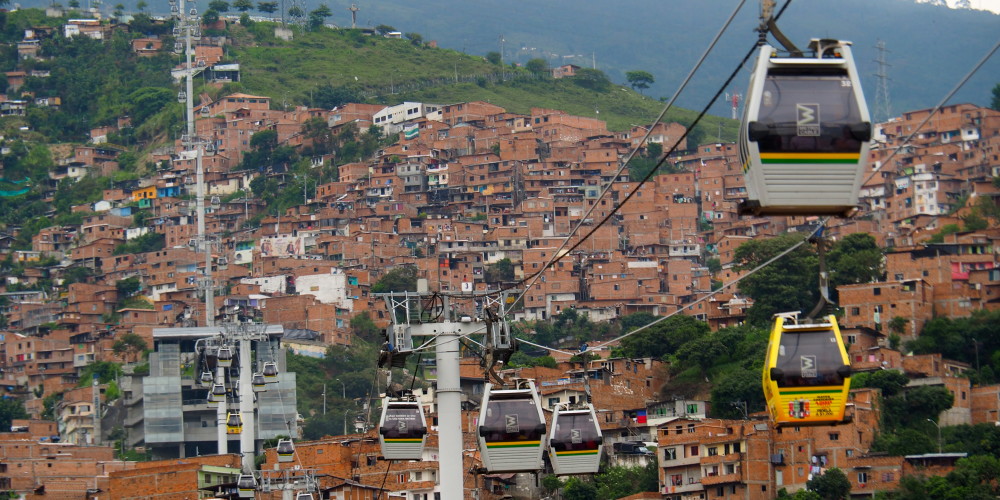With only a comparatively short time in Colombia (approximately three weeks), we decided to take advantage of the cheap domestic flights and fly from Cartagena to Medellin. In hindsight, this was a godsend as Dave was still sick from the disgusting water he had accidently swallowed whilst at Totuma Volcano and a ten hour bus ride would have been out of the question.
Our flight arrived in Medellin with no issues and our lovely AirBnB host had organised a taxi driver to collect us and take us to the apartment we would be spending the next four or so days in. The 40-minute drive from the airport into the city gave us a pretty good ideas of how mountainous the region is – there were literally winding cliffs and mountains around every corner, and as we approached Medellin we were both in awe of how BIG it seemed!
And after the overwhelmingly humidity of the last few months, it was a pleasant surprise to find the weather crisp and breezy, with the temperature at a comfortable 24 degrees with blue skies. We soon learnt that Medellin is nicknamed the ‘City of Eternal Spring’ as it enjoys perfect spring weather nearly every day of the year – which was fine by us!
We had booked an Airbnb which turned out to be a great idea – our apartment was located in trendy Poblado and the street was modern and very safe.
Our Street in Medellin
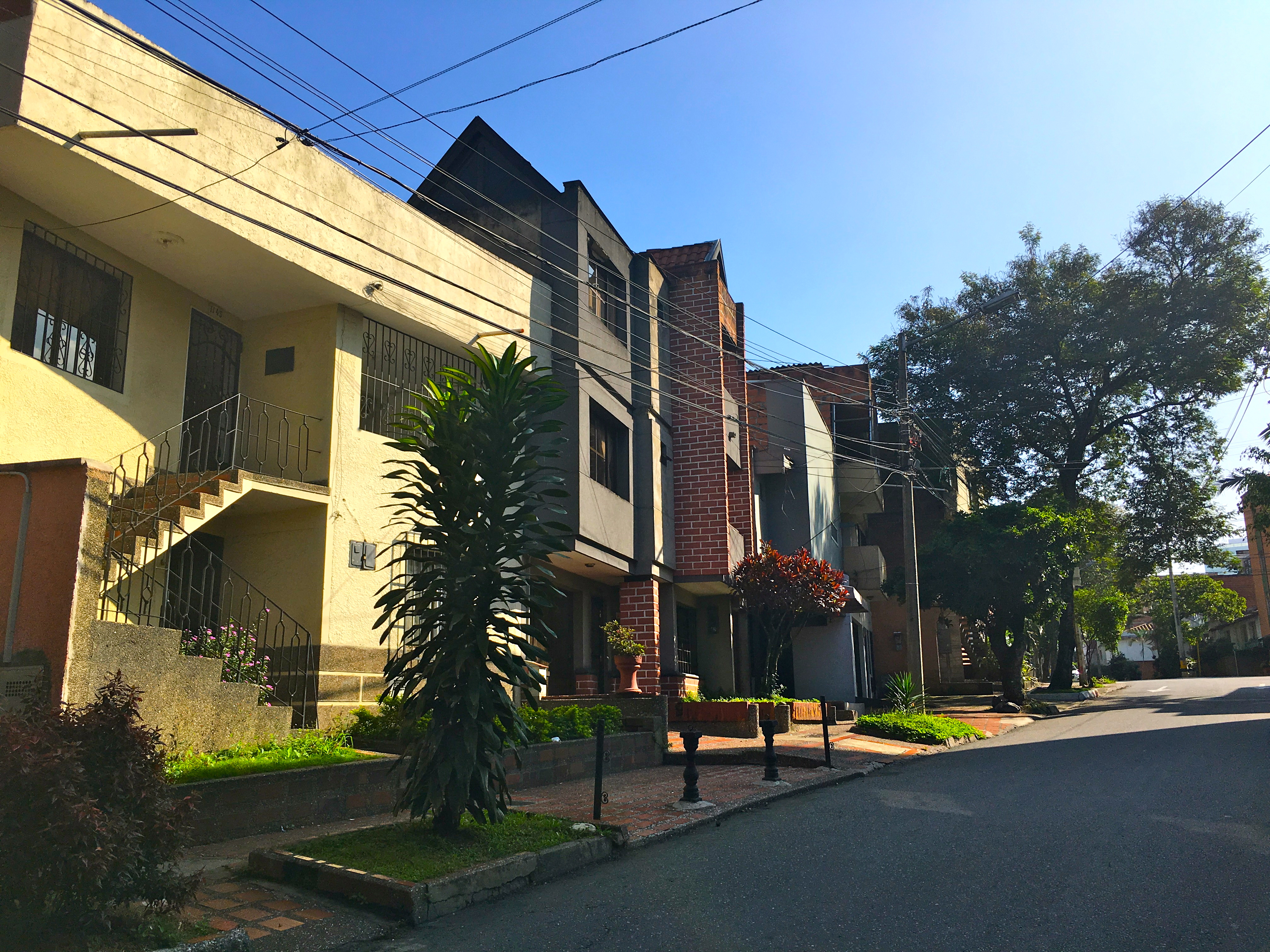
My expectations about Medellin were really only half formed – all I knew of it was that it had been home and stomping ground to one certain Colombian druglord – Pablo Escobar. And most of what I knew about Pablo came from the Netflix series, Narcos (I hate even writing that, it sounds so uninformed) and yes, that feels shallow but I am under no pretences that the Series glamourised the drug war and the USA’s involvement.
However, after our various walking tours in Cartagena where I had already learnt so much, Dave and I were ready and willing to learn more about Medellin from the source – its local people.
Medellin Free Walking Tour
As a result, we booked onto the Medellin Free Walking Tour the first full day after we arrived and hoped it would be as insightful and enjoyable as the tours we had experienced in Cartagena.
After meeting our tour guide Juan, around 9:30am the morning of the tour, our group of about thirty people walked a short distance then sat down one some steps near the town hall while Juan gave us a brief overview of Medellin history, and the nuances of its people.
Our tour group listening intently to Juan (in the red shirt)
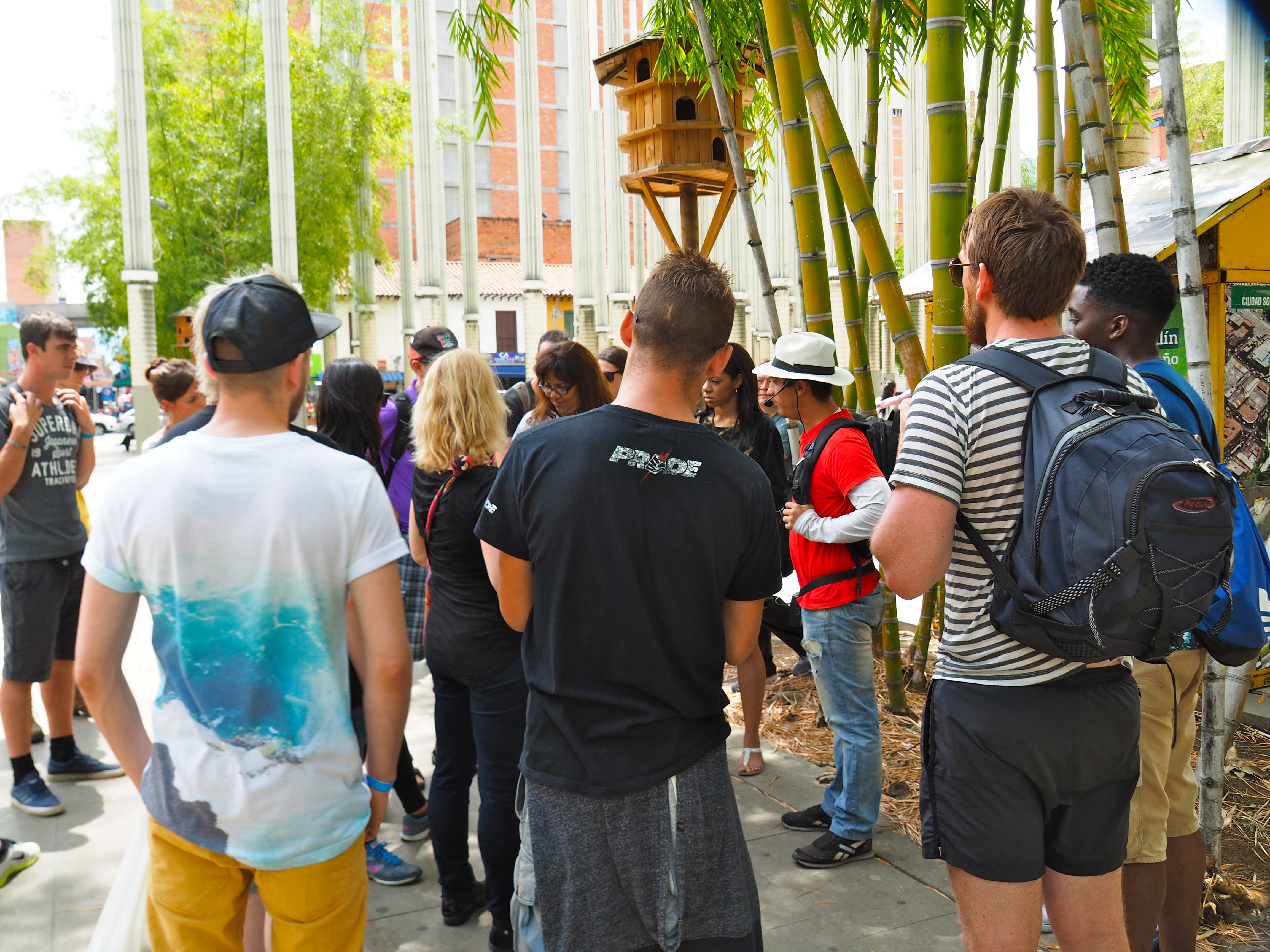
The first thing we learnt from Juan is that people born of and around Medellin are called “Paisas” (both by themselves and by the rest of the country) and they’re pretty confident they’re “different and better” than their fellow Colombians. It was pretty funny hearing Juan, a self-professed and proud Paisa, using this description to describe his people, but he did a pretty good job of explaining both why they considered themselves not only different but better.
I won’t give away too much, but essentially the Paisa region is made up of a lot of Basque (yep, as in the the Spain / France region) people from when they conquered Colombia and if you ever met a Basque person from Europe, you’ll know they consider themselves neither French nor Spanish, but Basque. This attitude has obviously filtered down through the generations to Paisa country now too!
The Church in the photo below demonstrates the Paisa attitude fairly well. According to Juan, a European architect designed the Church with its two-tone facade bu the locals complained he was taking too long, so he quit and moved back to Europe. Rather than trying to finish his detailed work, the Paisa’s basically just finished the walls off in a plain manner – you can see the contrast below in the second photo where the walls of the Cathedral are plain.
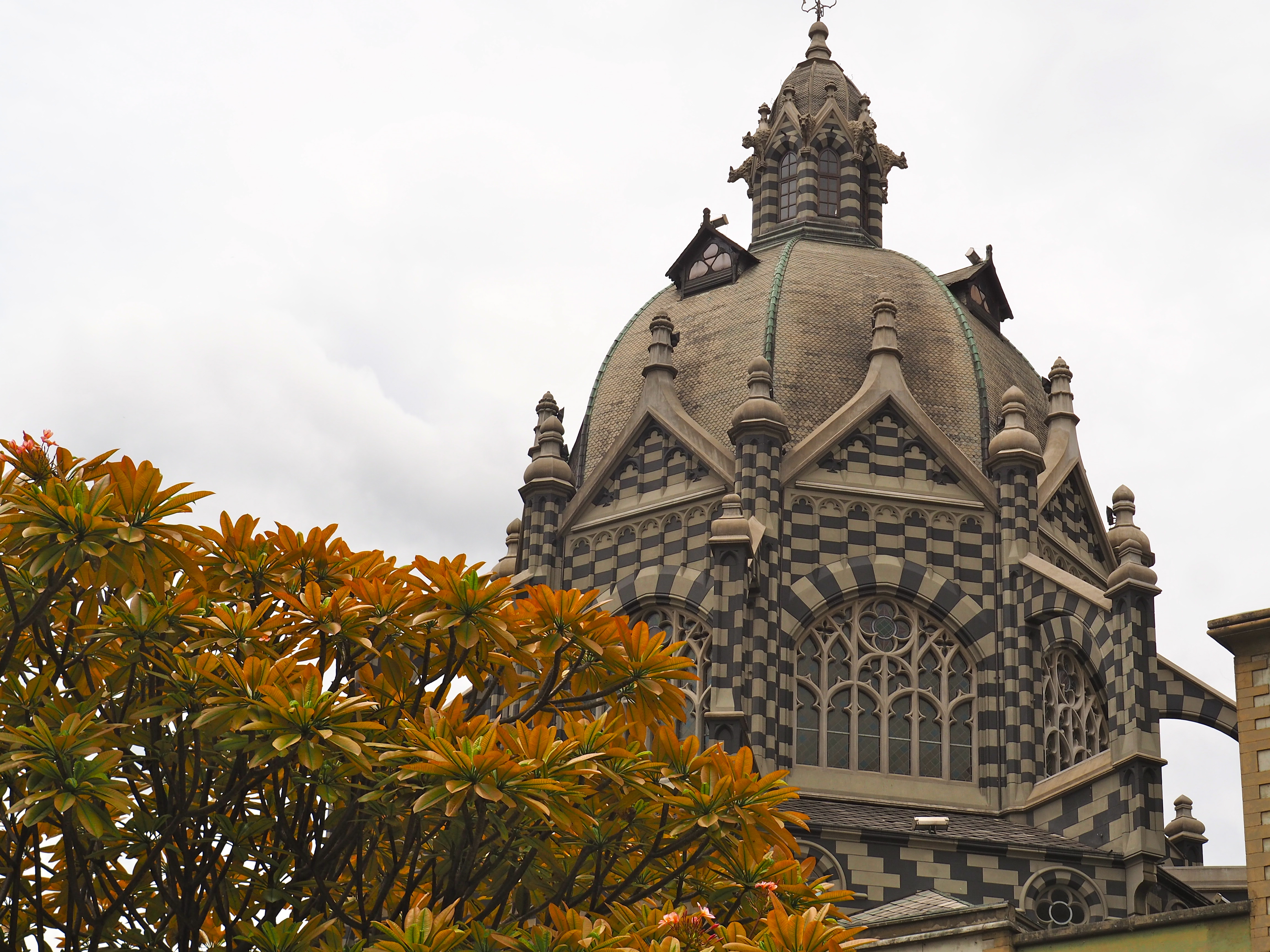
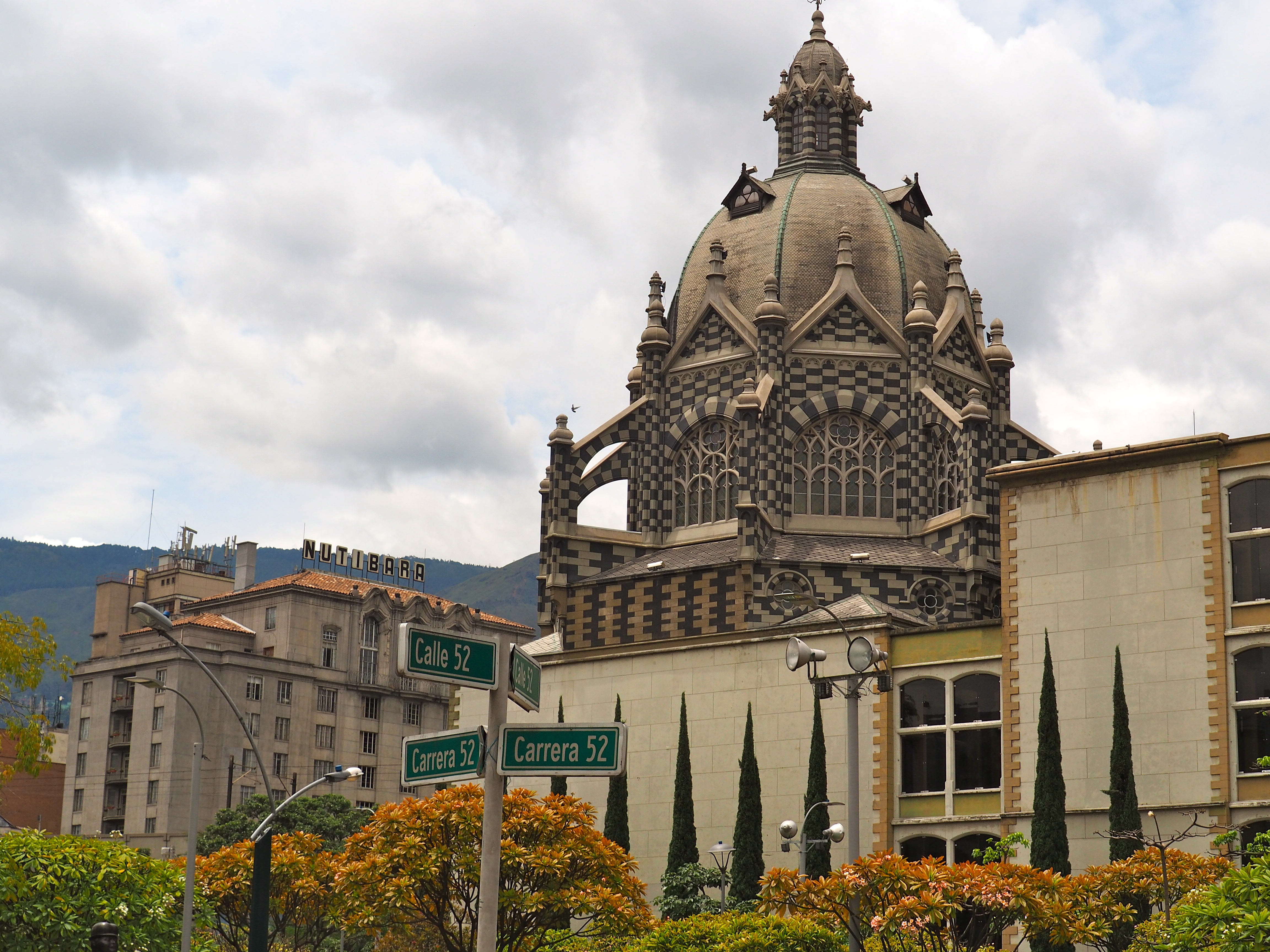
Juan gave us a pretty detailed overview of modern Colombia, which conveniently led into a gritty and honest appraisal of Pablo Escobar and the overwhelming damage he did to the Colombian community, and particularly to the people of Medellin. In order not to attract the attention of the locals to what can be an inflammatory topic, Juan said he would refer to Escobar as the ‘famous criminal’ and asked that we do the same whilst in Colombia. The majority of Colombians cannot speak English so this way they would not know what/who were talking about – apparently the Paisa resent tourism revolving around Escobar. Juan explained why.
We learnt that tragically, eight of Juan’s ten childhood best friends were killed in the late 1990s/early 2000’s (Juan was about our age, early 30’s) in the aftermath of Escobar’s reign of terror. Not only that but two of his uncles were kidnapped and held in an underground room for over a year by Escobar’s henchmen, and only released when a hefty ransom that sent his previously well-off family broke. We learnt how Juan booked a two week holiday to the USA soon after then lived illegally in the States for five years so he would be safe from the Colombian corruption that was rife, only returning when the government stabilised to a point where we felt he could return home safe. All this from a guy who could have been us, but for where we were born. Crazy.
Anyway, my point is that despite what Escobar was no hero, no Robin Hood robbing the rich to save the poor. He may have built a paltry 300 homes for some poor families (in a city of eight million), and wowsers – football pitch – but when you’re comparing that to the more than 600 Medellin policemen who chose the bullet rather than the bribe, not to mention the ordinary citizens who were killed, and the thousands more who felt the wrath of his rein, there can certainly be no doubt that Escobar was a terrible, terrible man with little or no conscience.
Despite this, it is still commonly reported that the people of Medellin supported and even today, still have a hero-worship thing going for Escobar. According to Juan, this is complete rubbish and he reiterated numerous times that very, VERY few Colombians would consider Escobar anything more than a dangerous, devious drug lord.
Anyway. After our history lesson, we explored the city of Medellin on foot and learn that despite its tumultuous recent history, Medellin is a city whose star is on the rise. Recently designated as one of the ‘most innovative cities’ in the world, the last two decades have seen some amazing technology and innovation in Medellin. It also has some stunning architecture, that demonstrate the blend of its European and indigenous roots.
A beautiful large sculpture that tells the Paisa
history from right to left (Paisa emerging triumphant)
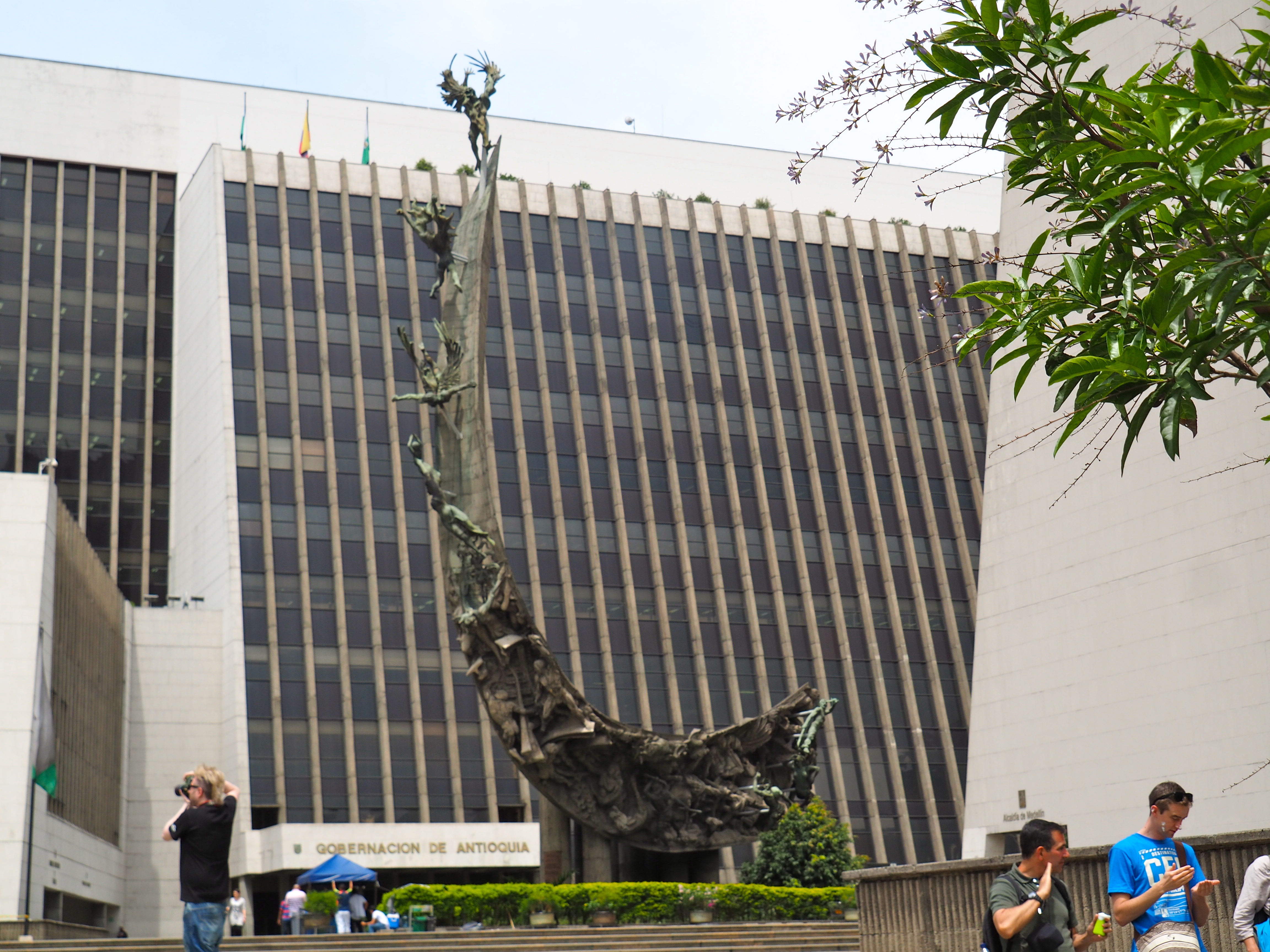
And a close up for an idea of the detail
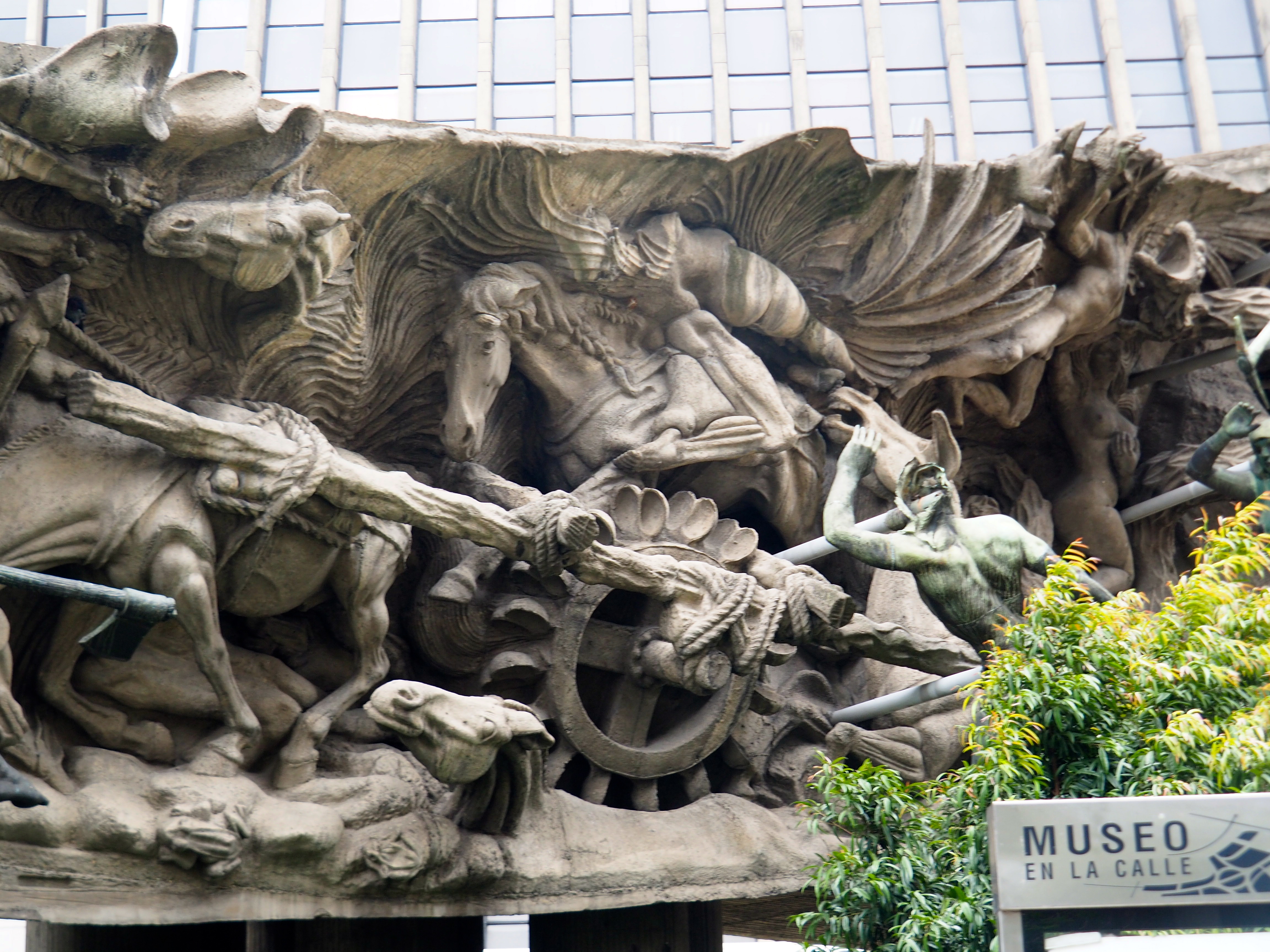
The artist (now deceased) who designed and created the above sculpture had his ashes embedded into the base of the sculpture
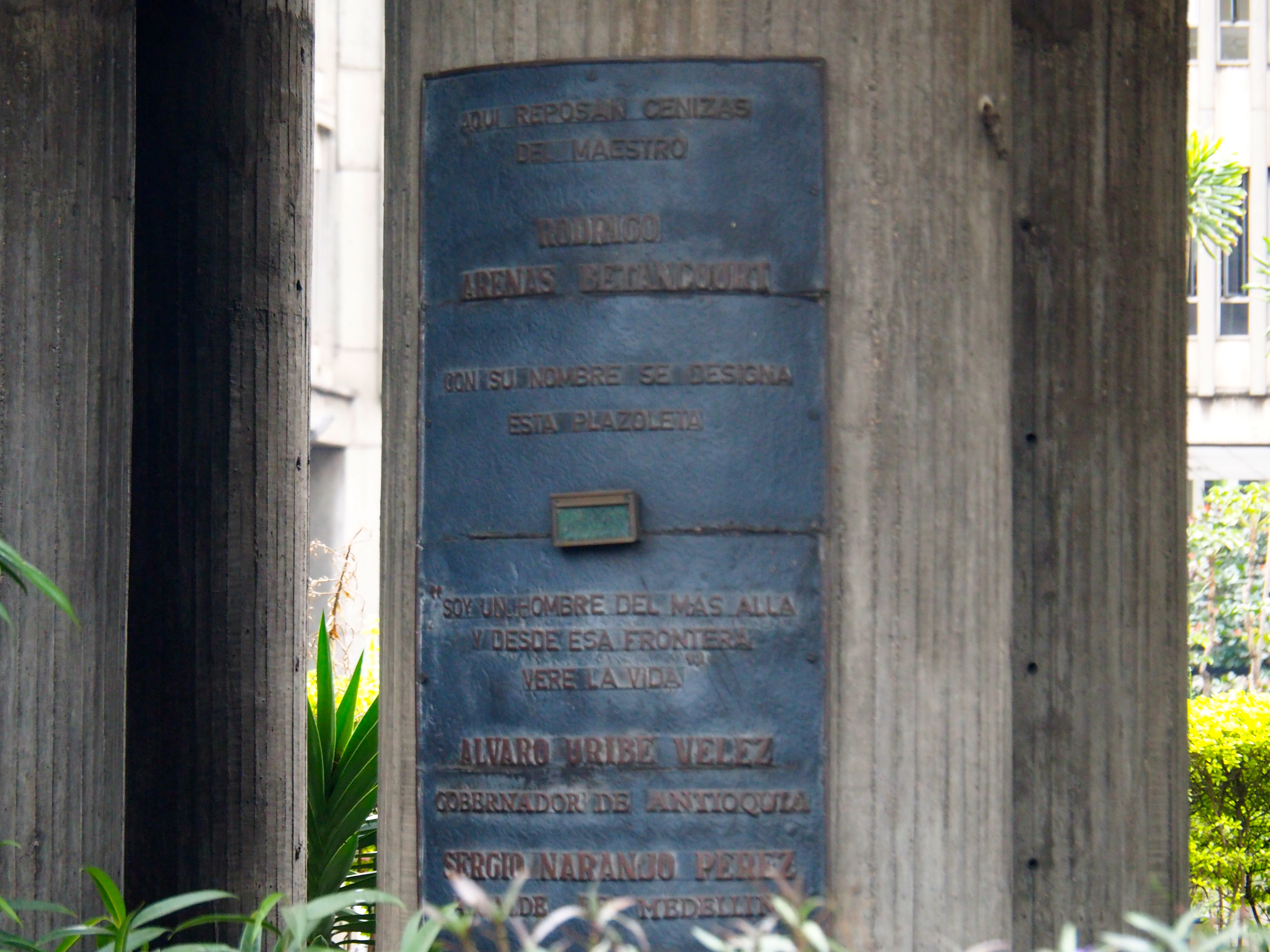
These permanent installations have inherently changed the crime rates of the city by removing dark and dingy plazas and replacing them with airy and bright areas where people socialise in a positive way.
Examples of Medellin’s Street Art / Placemaking
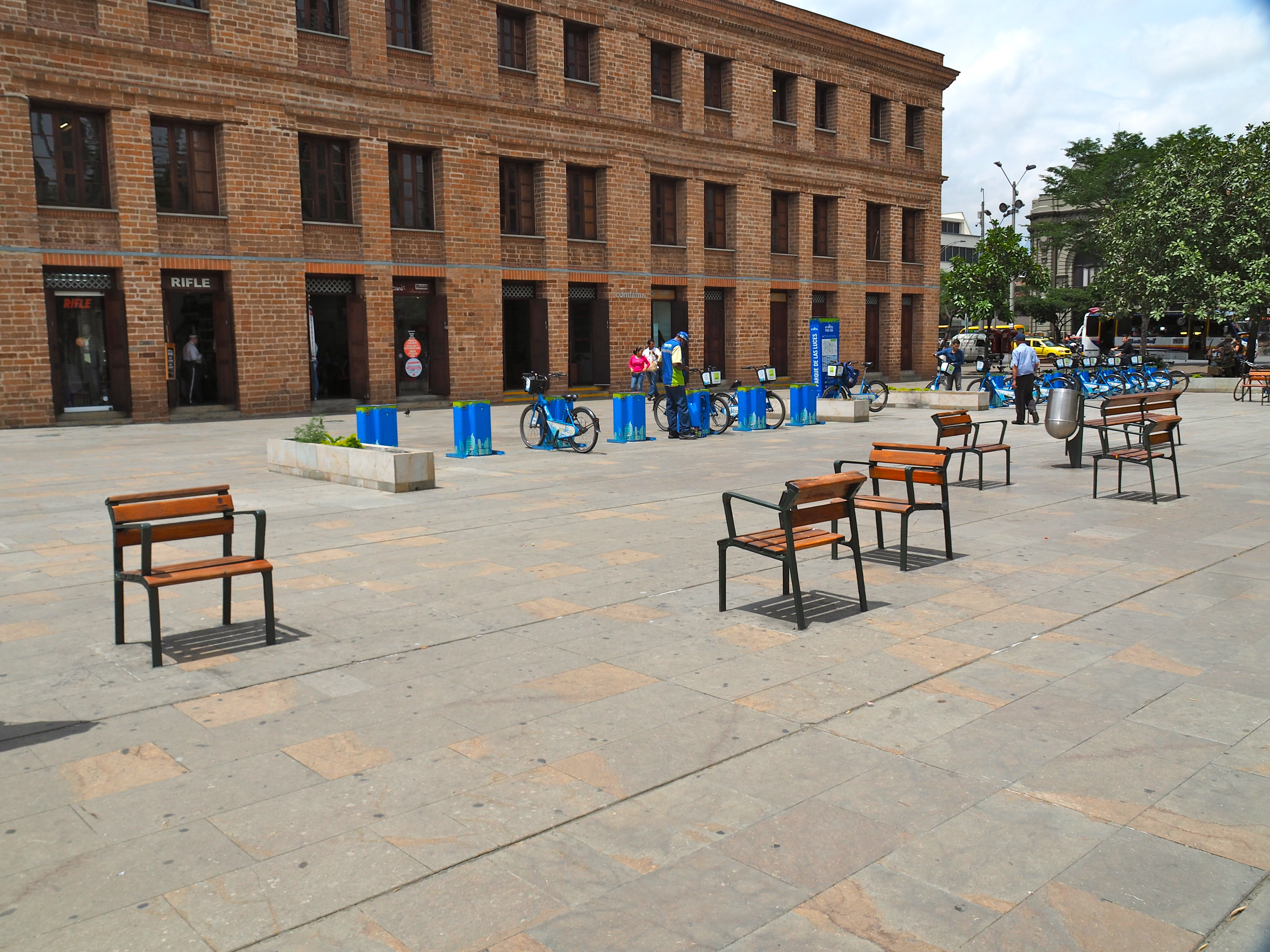
I love this one in particular – the “Plaza of Light” or Plaza de la Luz
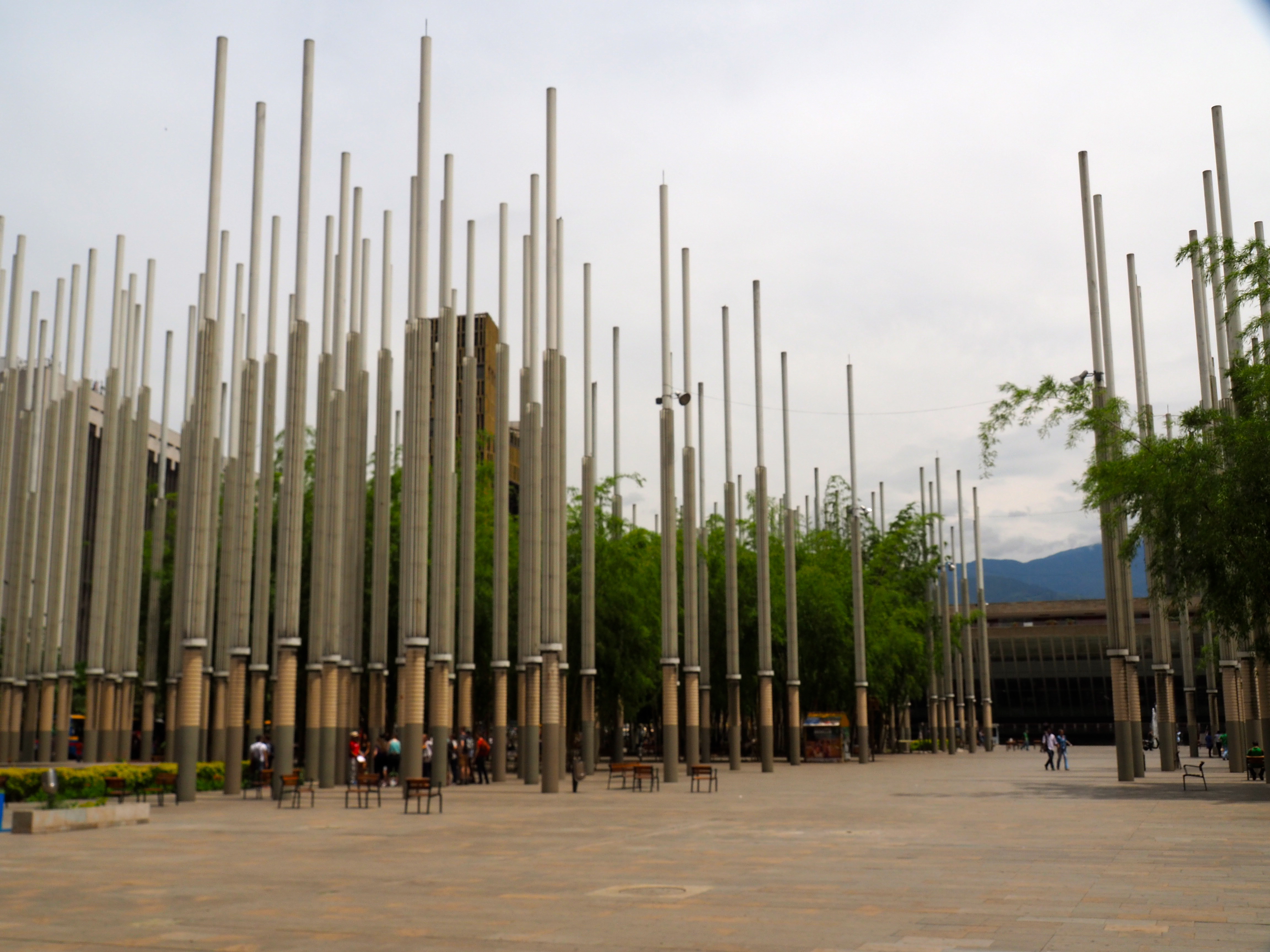
A stunning Church showing Medellin’s European ancestry
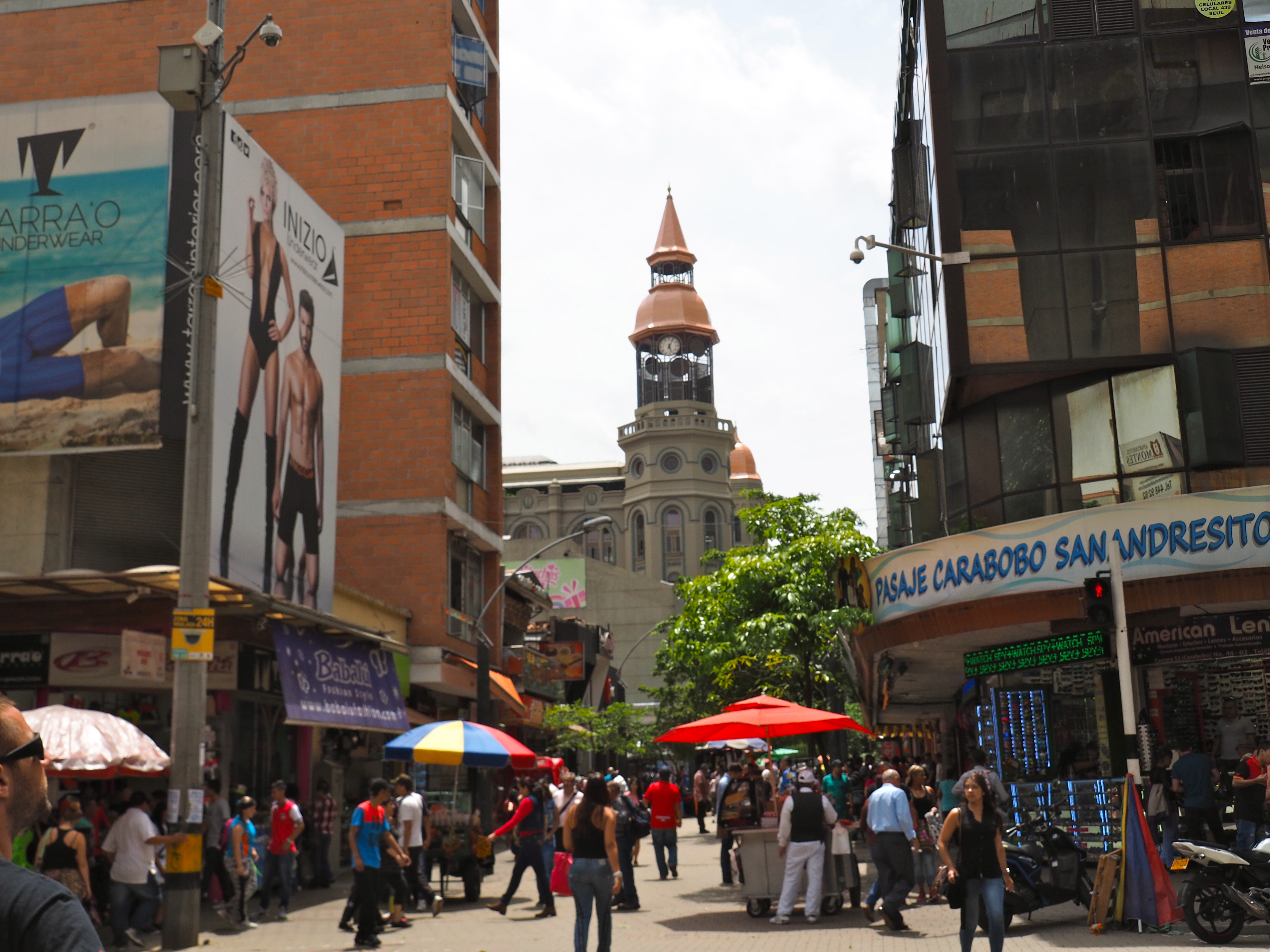
Our group enthralled by Juan’s stories
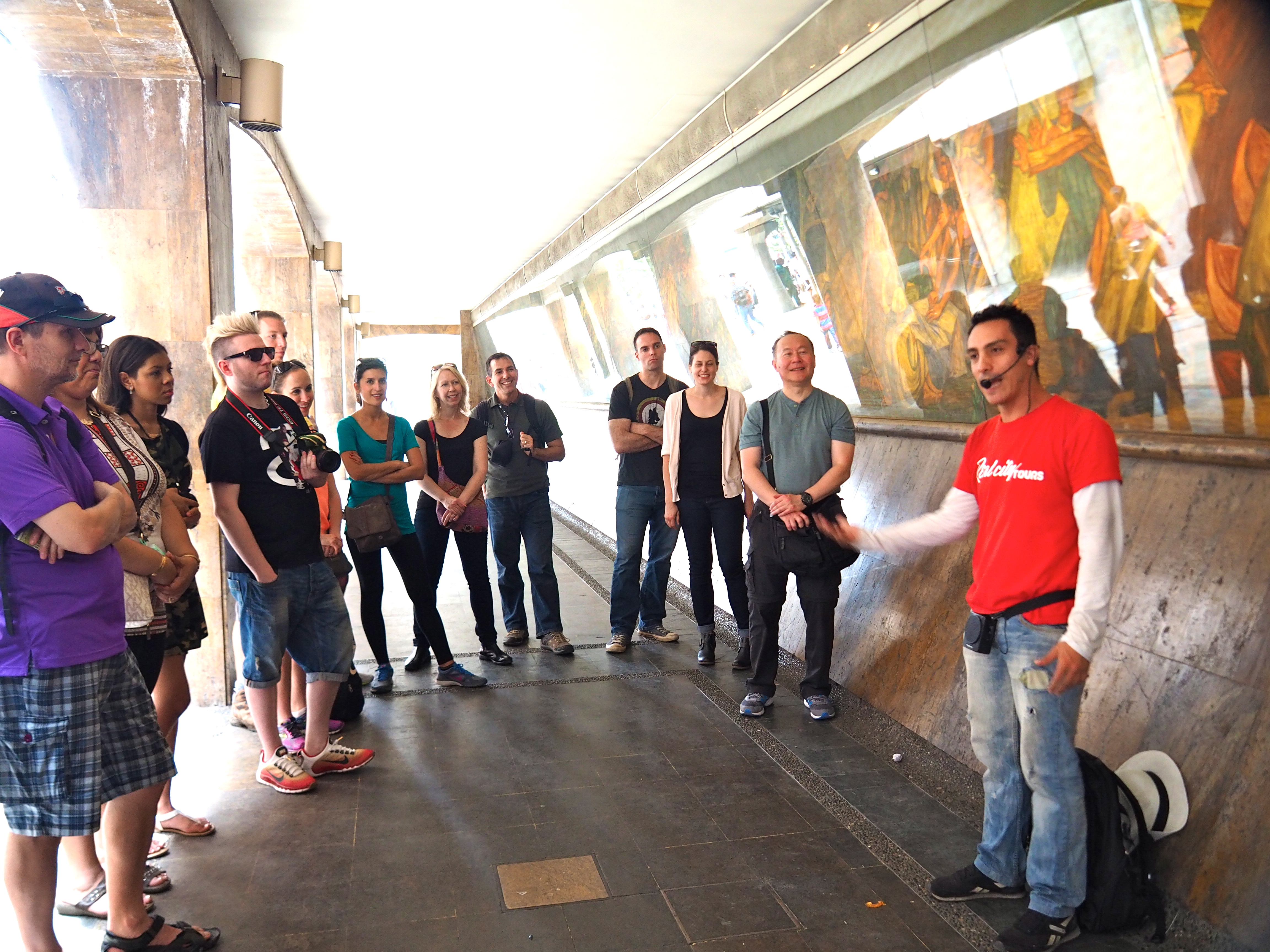
The vibrancy of Medellin locals going about their daily lives
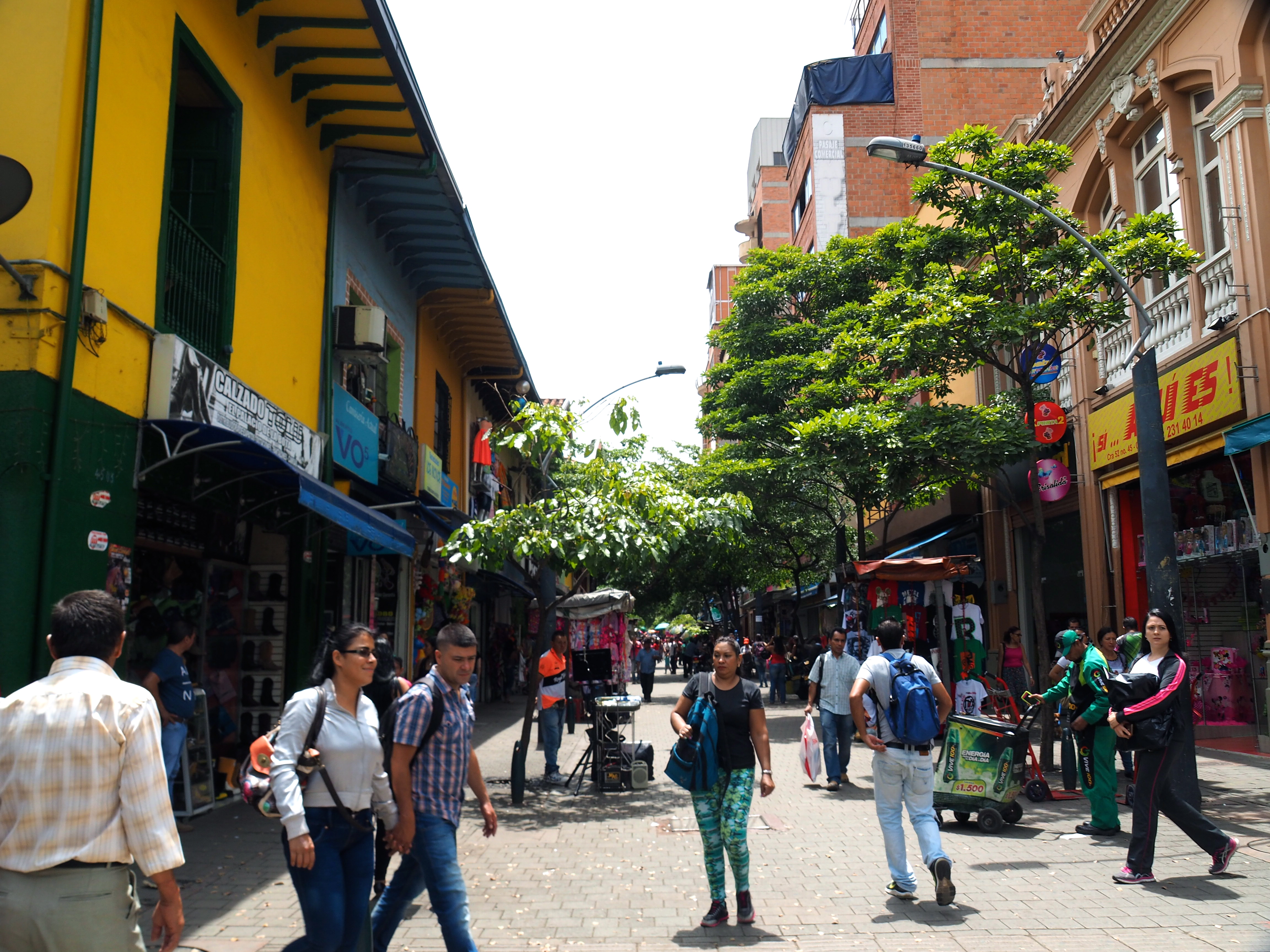
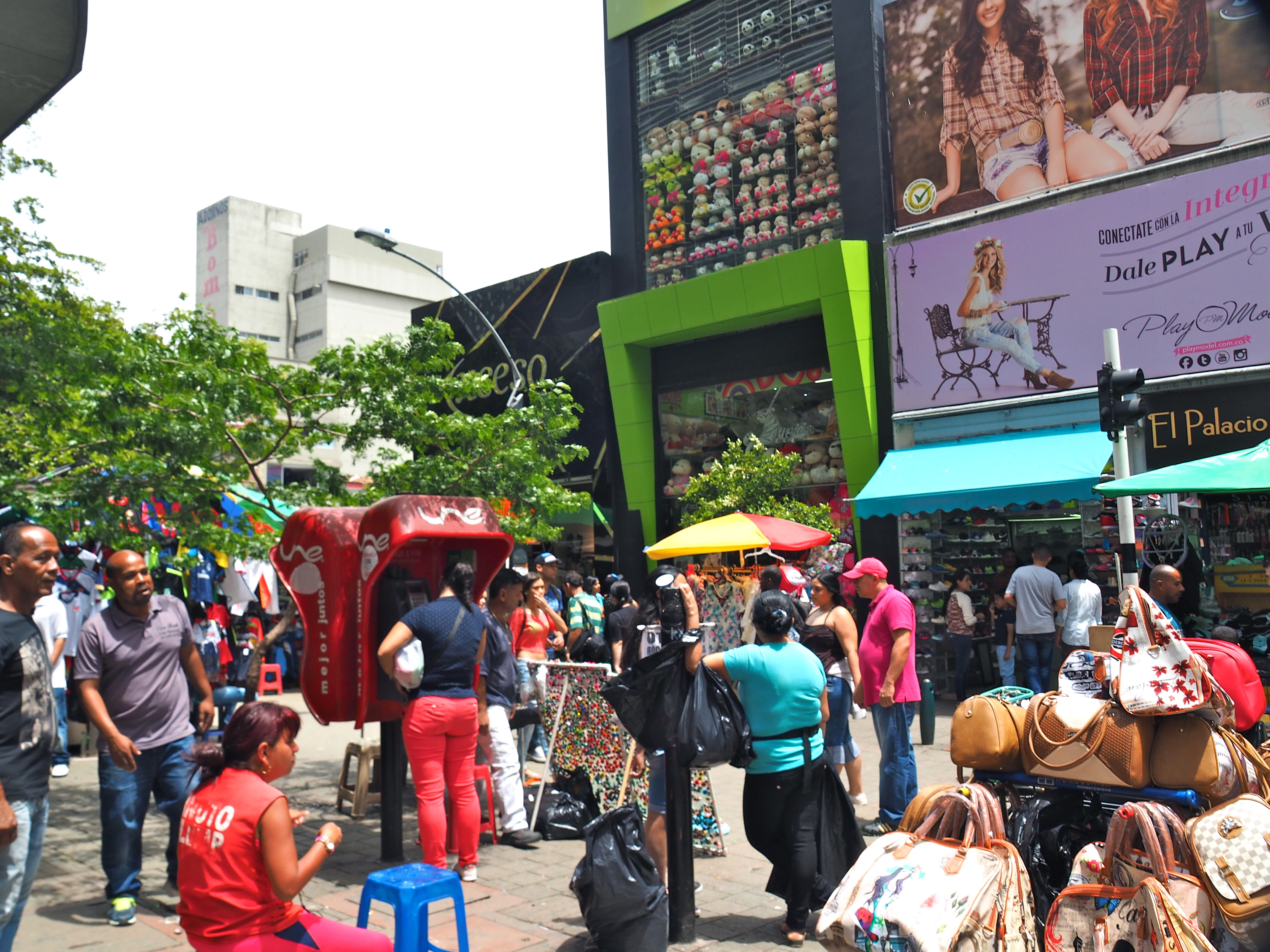
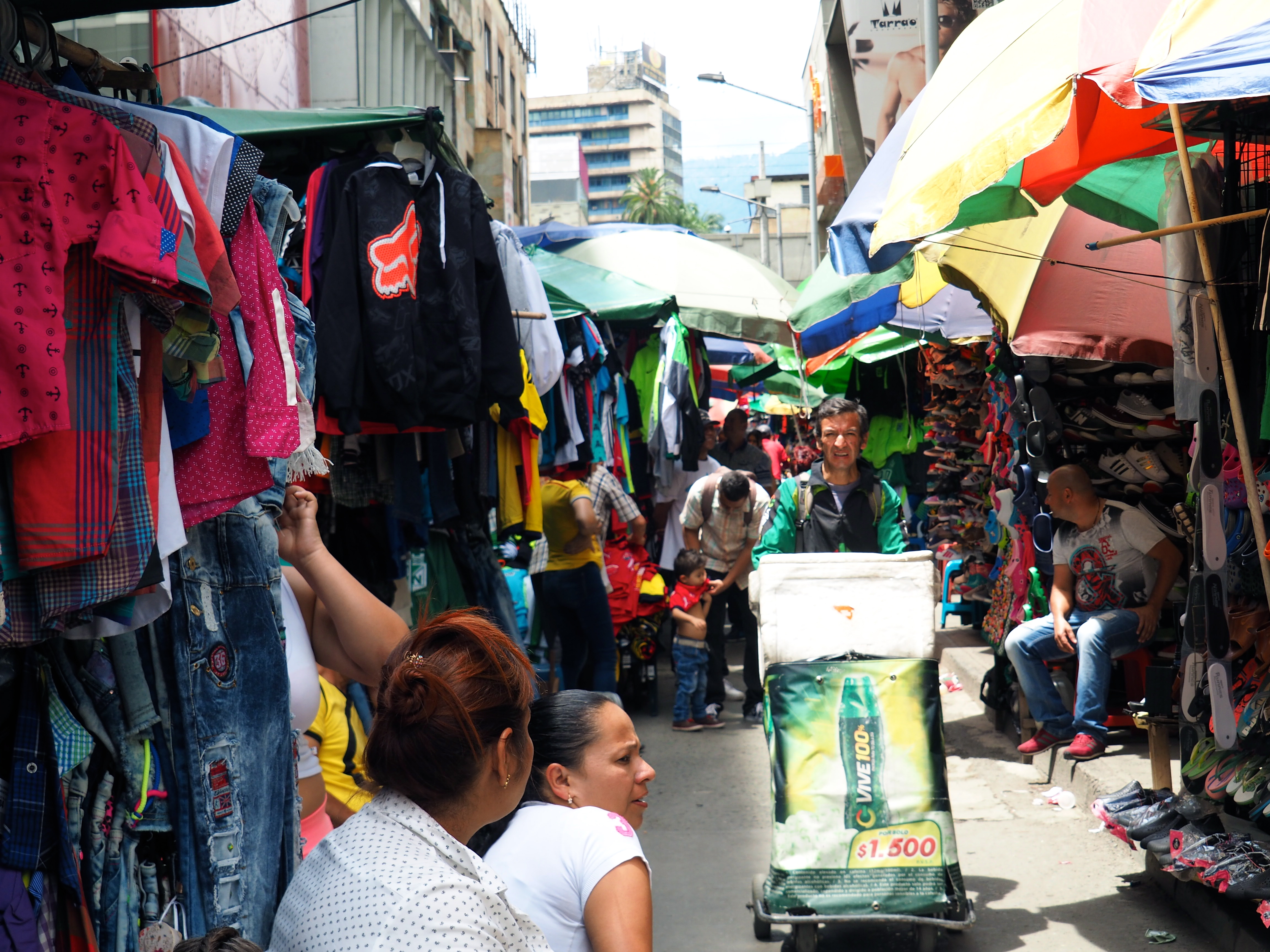
A man with an avocado streetcart having a break for a chat with a mate
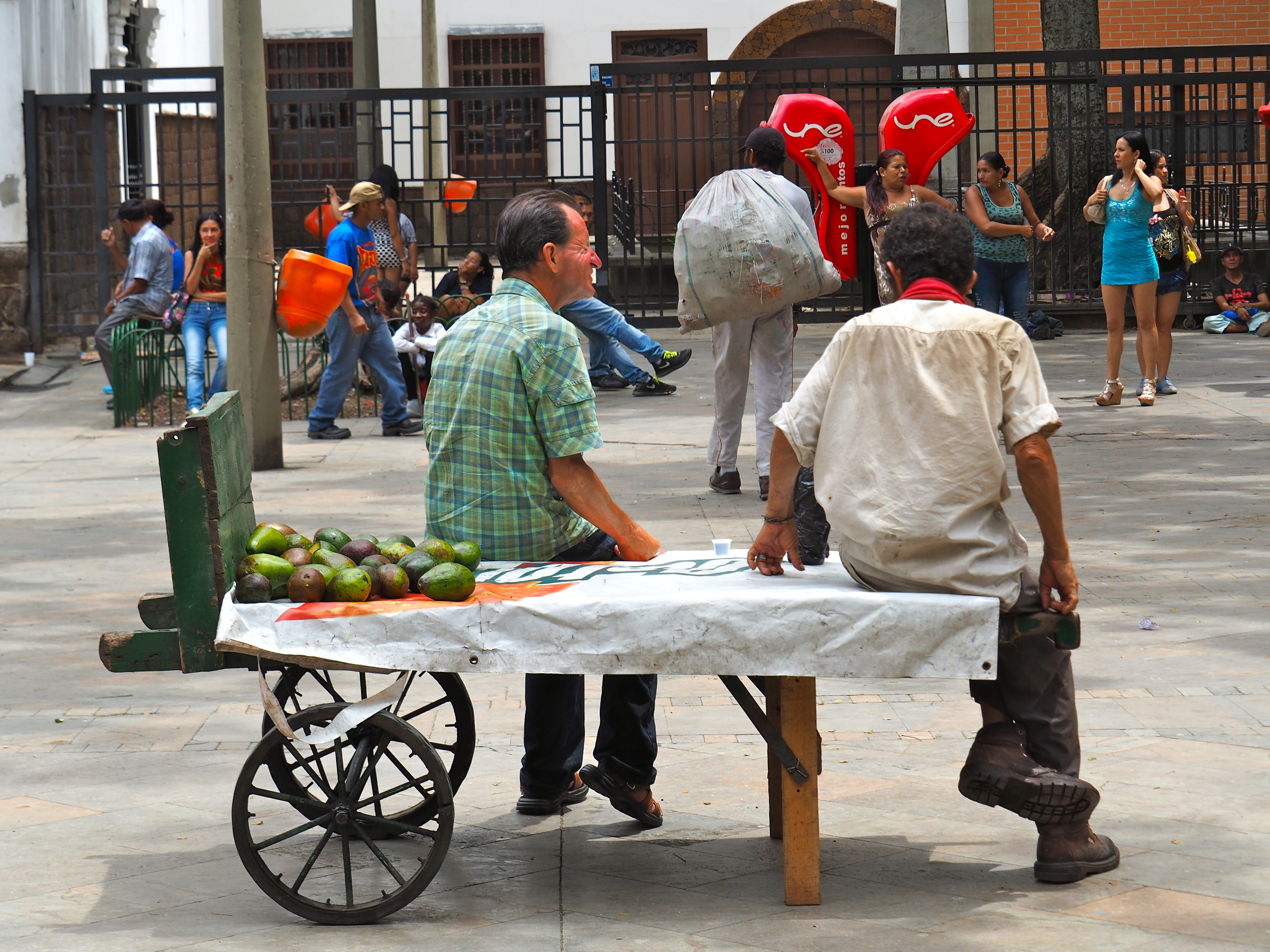
Another fresh fruit and veg market stall
(I really will miss these when back home!)
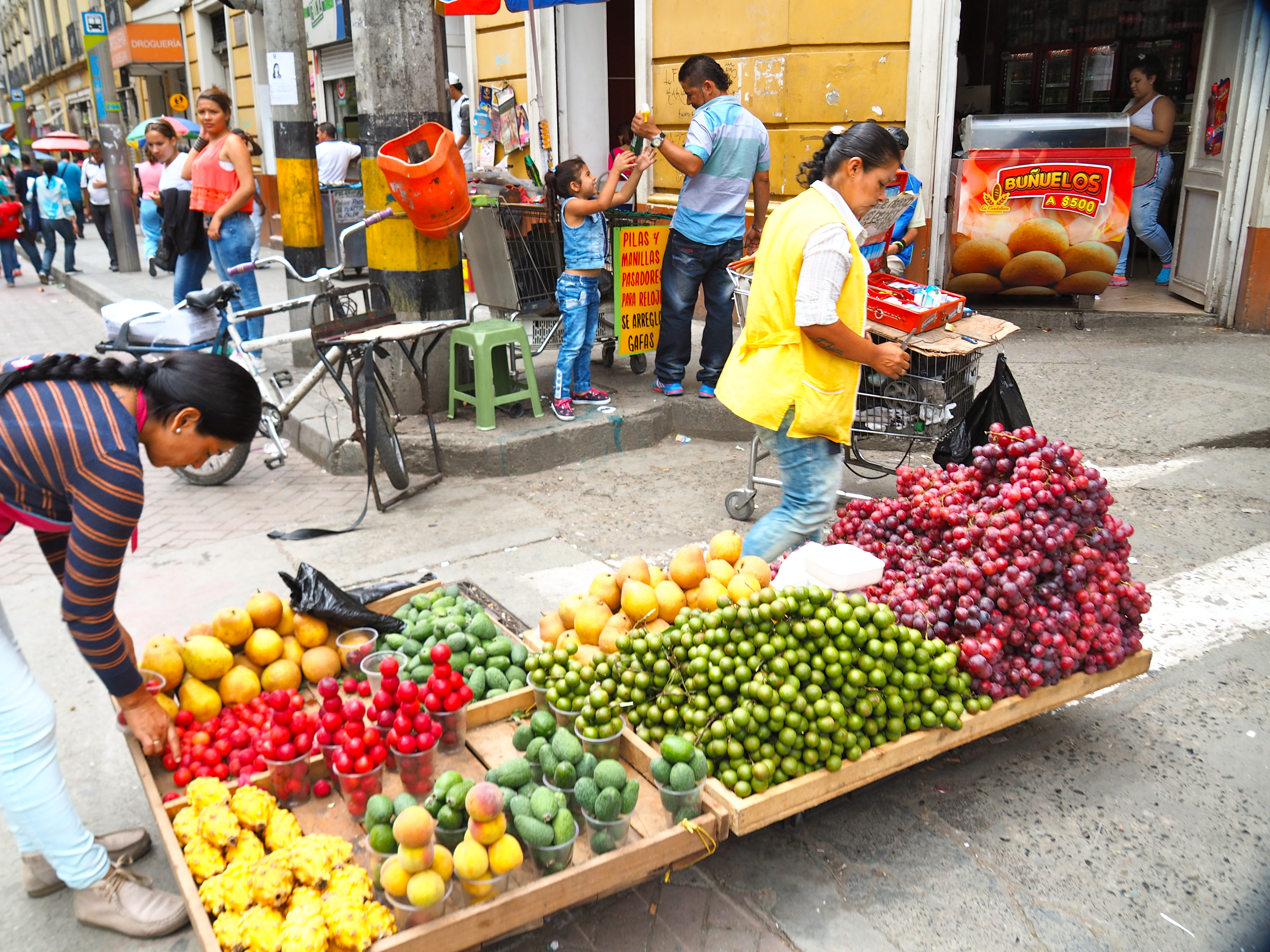
From the metro cable car that is now an integral part of the city’s public transport system (more about this shortly), to the permanent place-making art installations in what were once dodgy parts of the city, Medellin has done everything in its power to leap forward into the twenty-first century with gusto and passion.
A statue of Bolivar in yet another Plaza de Bolivar (yes, there is one in pretty much every Colombian city, and I am sure it will be the same in Bolivia considering they named their country after him!)
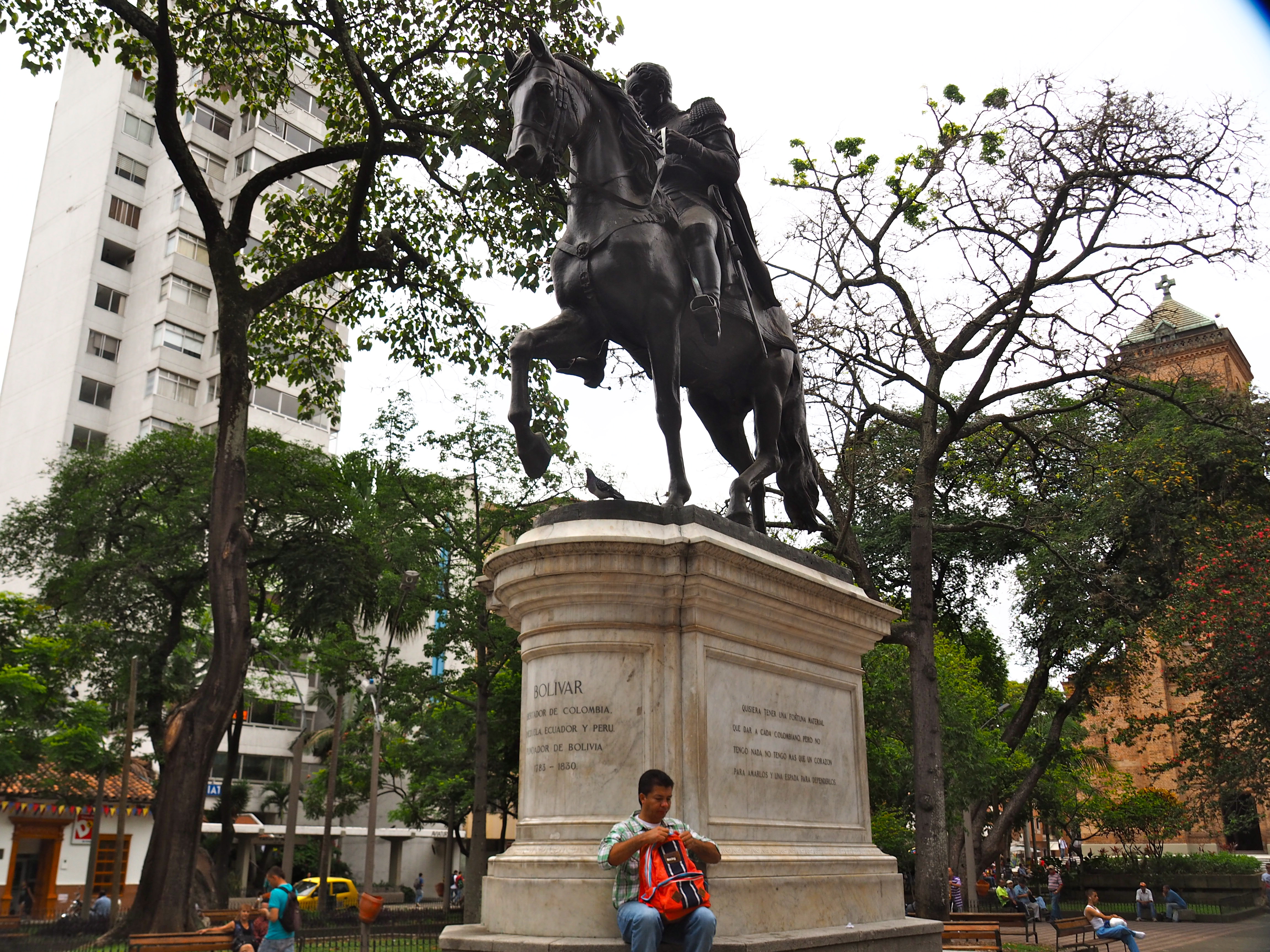
One of the artists who seemed to have taken a particular liking for Medellin (or maybe it is because he was born there!) is Botero, who designed and created tens of sculptures which are on display around the city.
His sculptures are distinctive – rounded and voluptuous figures, usually with body parts and features out of proportion, and almost childlike in their appearance. We saw many of them as we traversed the city.
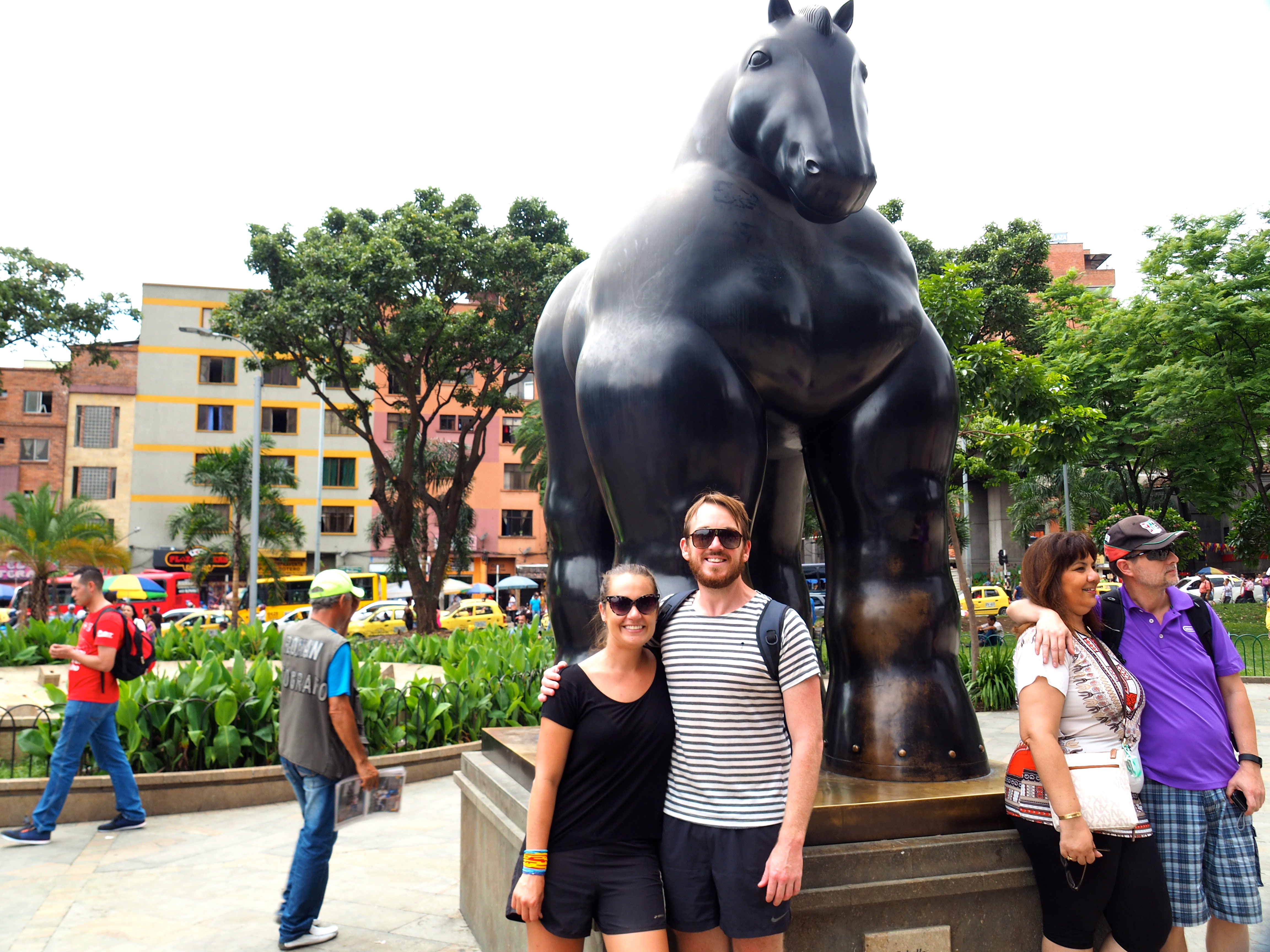
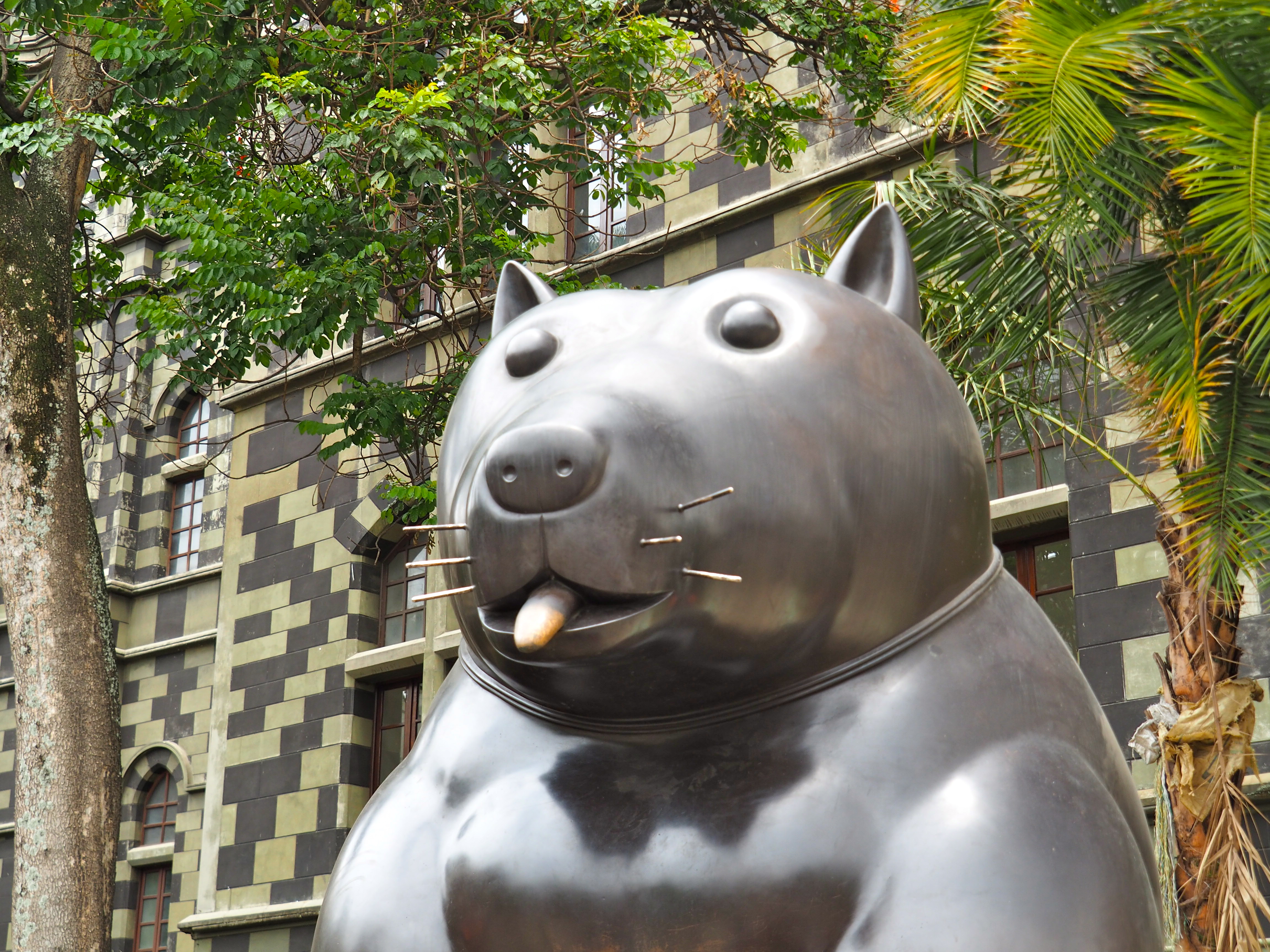
The two sculptures of the birds in the square below are perhaps the most poignant. The bird on the left had a bomb placed in it in the 1990’s and when it blew up, it killed many innocent people, including an eleven year old girl.
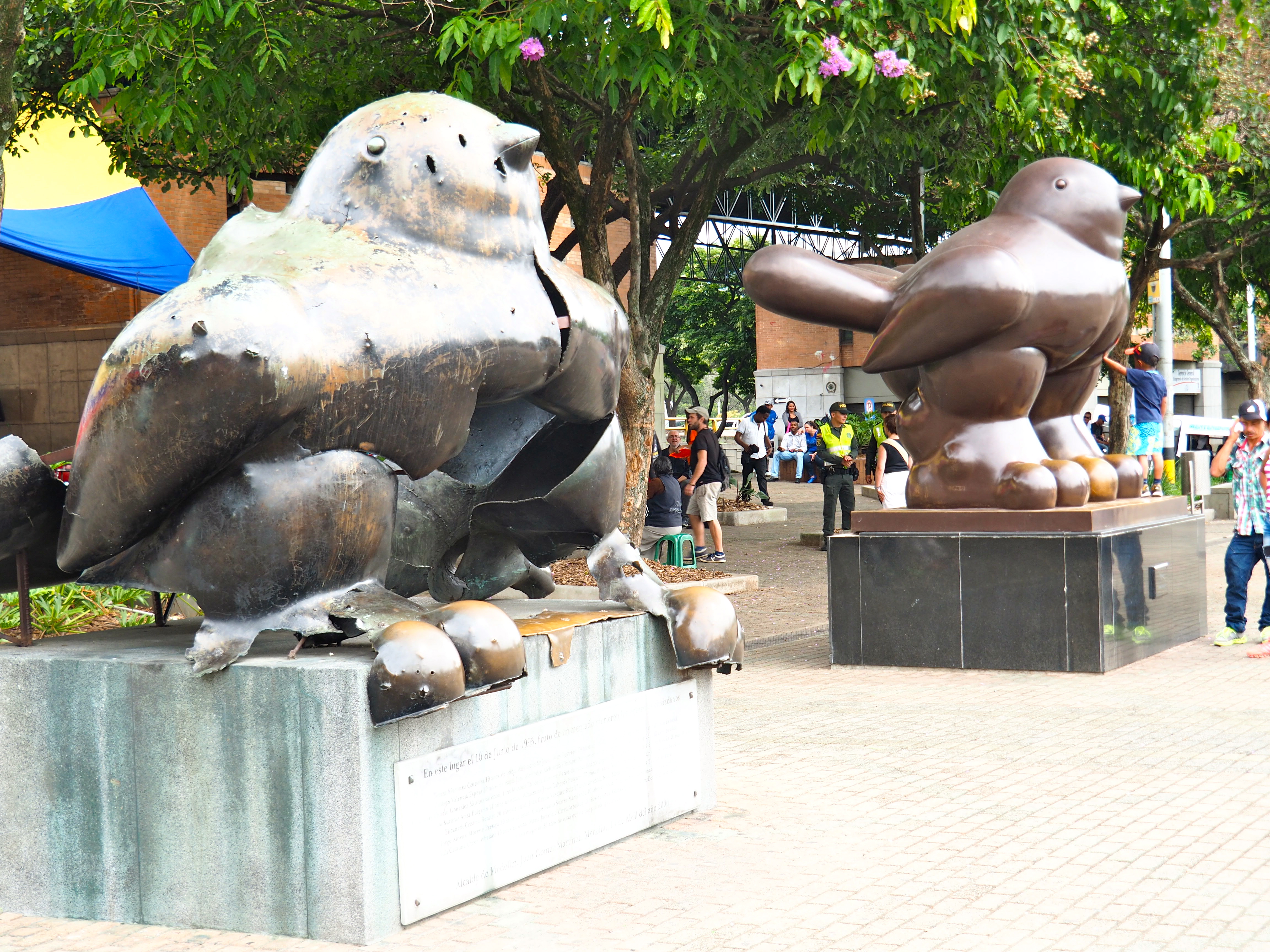
Rather than removing the remains of the shattered sculpture, the city and Botero decided it would send a louder message if a new bird was placed alongside the damaged one to show that things, people and places can be rebuilt, but it was important to not forget the past, but to learn from it.
We also enjoyed some of the best (and by best, I really mean, most deep-fried and piping fresh!) empanada’s of the entire trip – here I am below gorging myself on one!
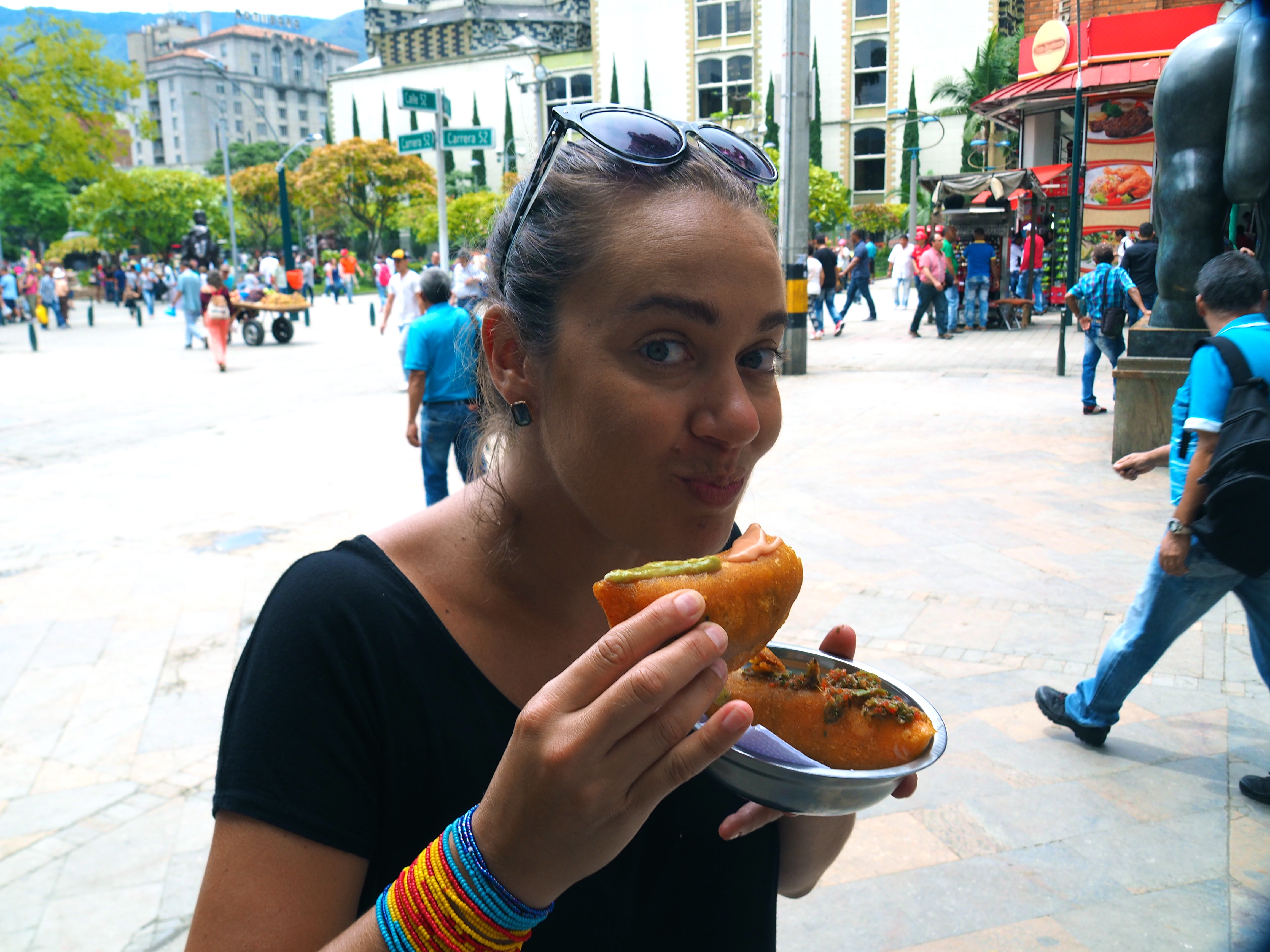
At Juan’s recommendation we enjoyed a late afternoon lunch at a local Paisa restaurant where Dave ordered the typical dish of the region – Bandeja Paisa. This meal is based on what the farmers would eat – and it was their one main meal of the day, so unsurprisingly, contains enough food on it for three meals!
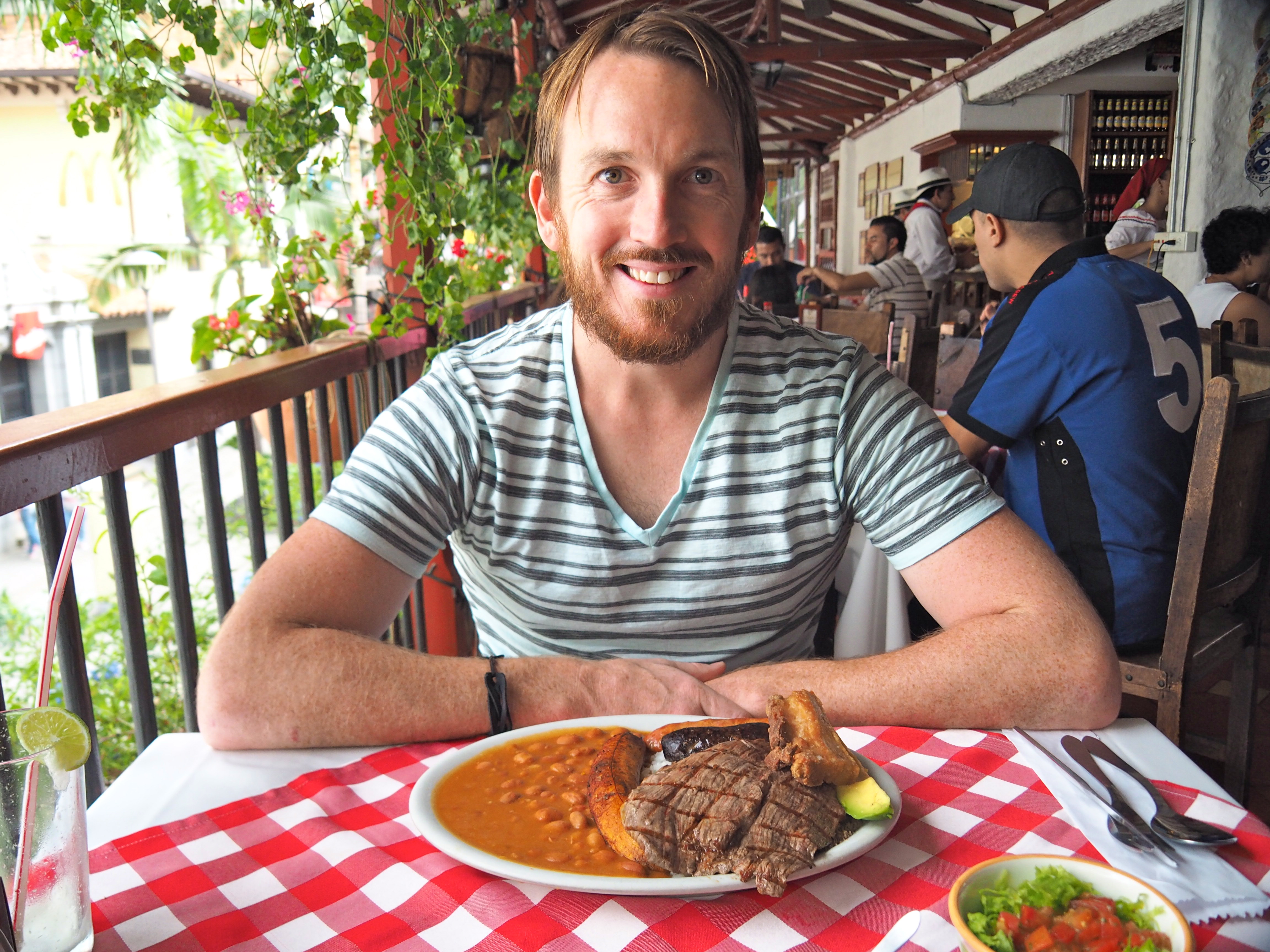

Dave’s Bandeja Paisa had fried egg, black sausage, avocado, chorizo, rice and beans (of course!), a steak, powdered beef (not sure of the attraction there but its very traditional!), plantain and pork crackle! Talk about a meal to keep you going!
We also spent one evening experiencing a bit of Medellin’s nightlife. Not quite the clubbing scene that the city is well known for, but we made our way to a square called Parque Lleras that is in the popular Poblado district (where we stayed) surrounded by funky bars and restaurants where the trendy young things and tourists tend to congregate.
Parque Lleras
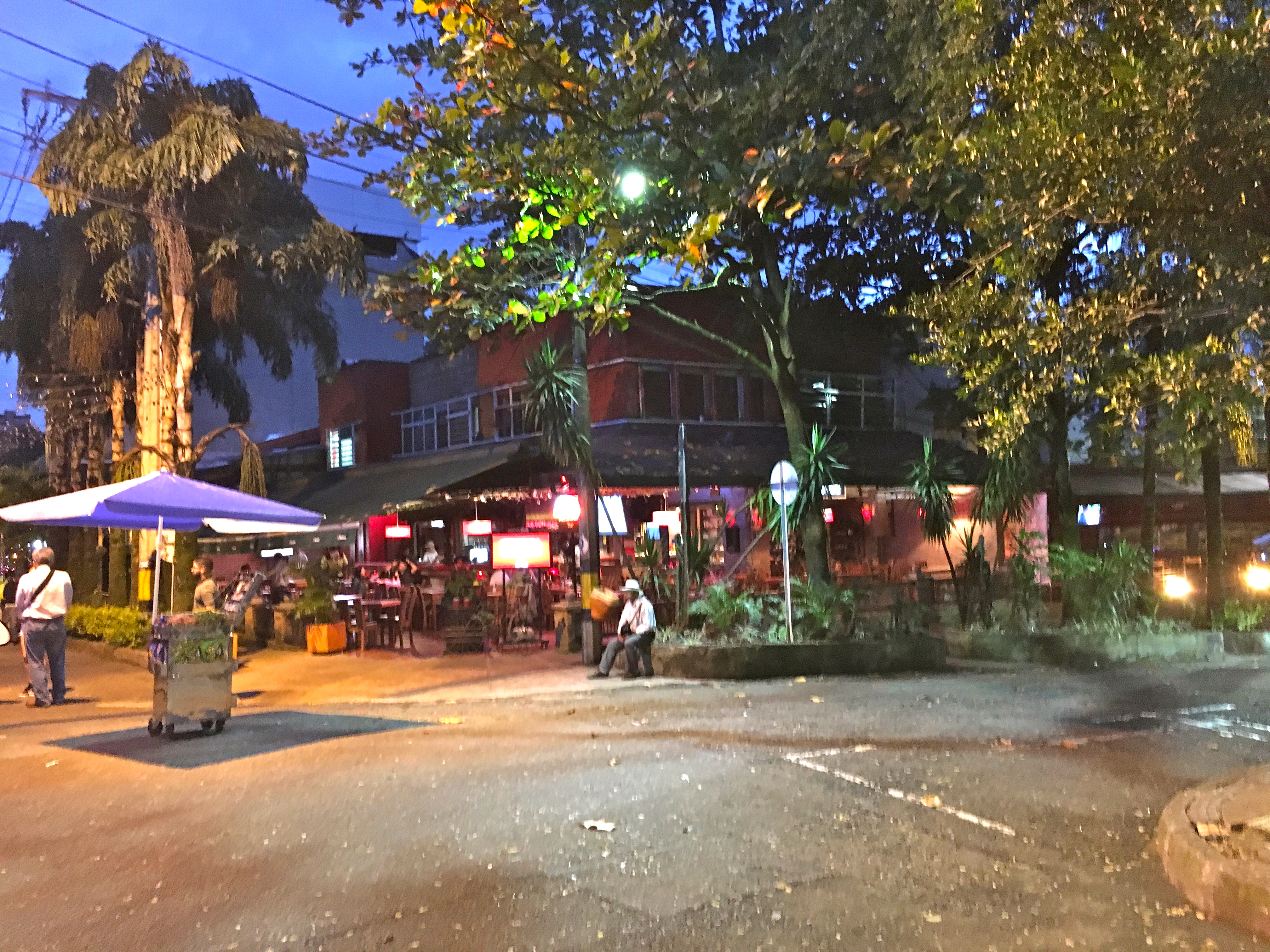
We pulled into a restaurant and ordered some delicious sushi – our first in many months! – and enjoyed a lovely bottle of red wine which felt like a bit of a splurge after not being able to buy red wine. We watched some street dancers (video below) and basically just soaked in the atmosphere which was vibrant and fun. No drunken louts filling the streets, only well behaved and sociable people – a delight!
STREET DANCER VIDEO –> Medellin streetdancers
Enjoying a red wine and some tasty sushi in Poblano

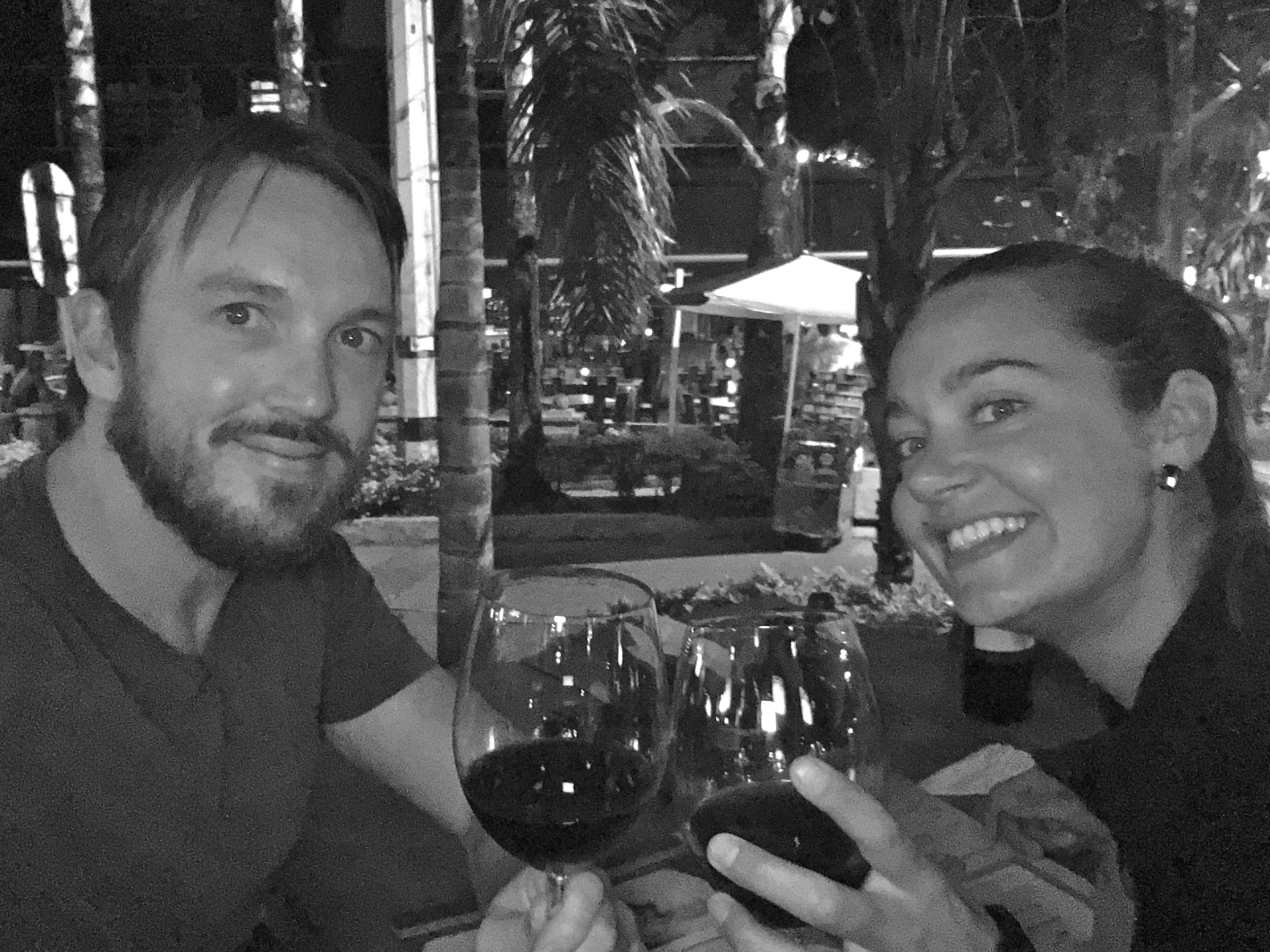
Medellin’s Metro Cable
When doing our research on things to do in Medellin, we were pretty surprised to see that a ride on the city’s public transport system in the form of a cable car was the most highly rated ‘sight’.
Over the last decade or so, Medellin has invested a lot of money into establishing and expanding its well-planned public transport system. One aspect of this system is the modern cable car transit route over two different lines that connect Medellin’s poorest districts with the city centre and the metro lines in an easy and cheap way.
Cable car!
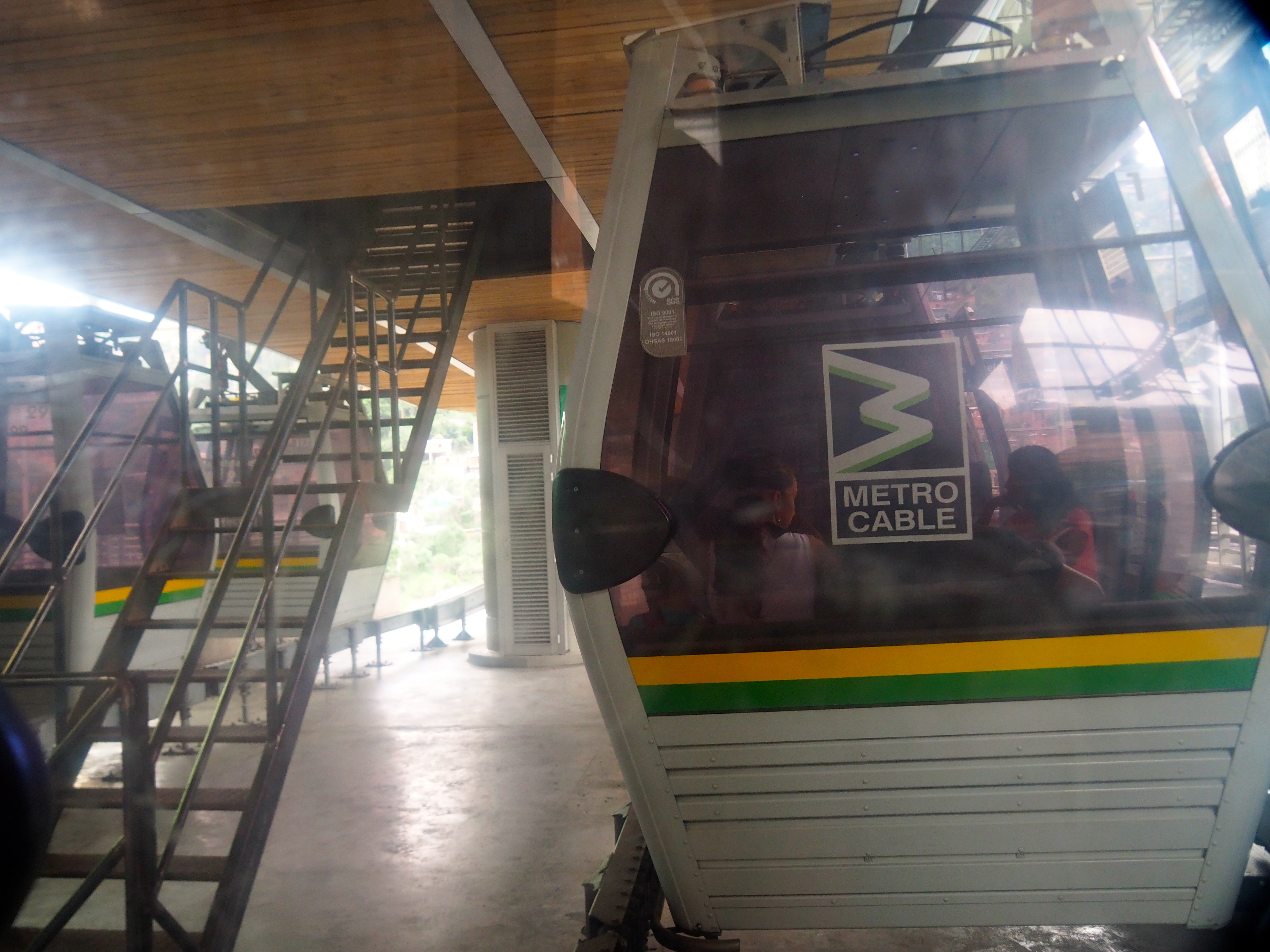
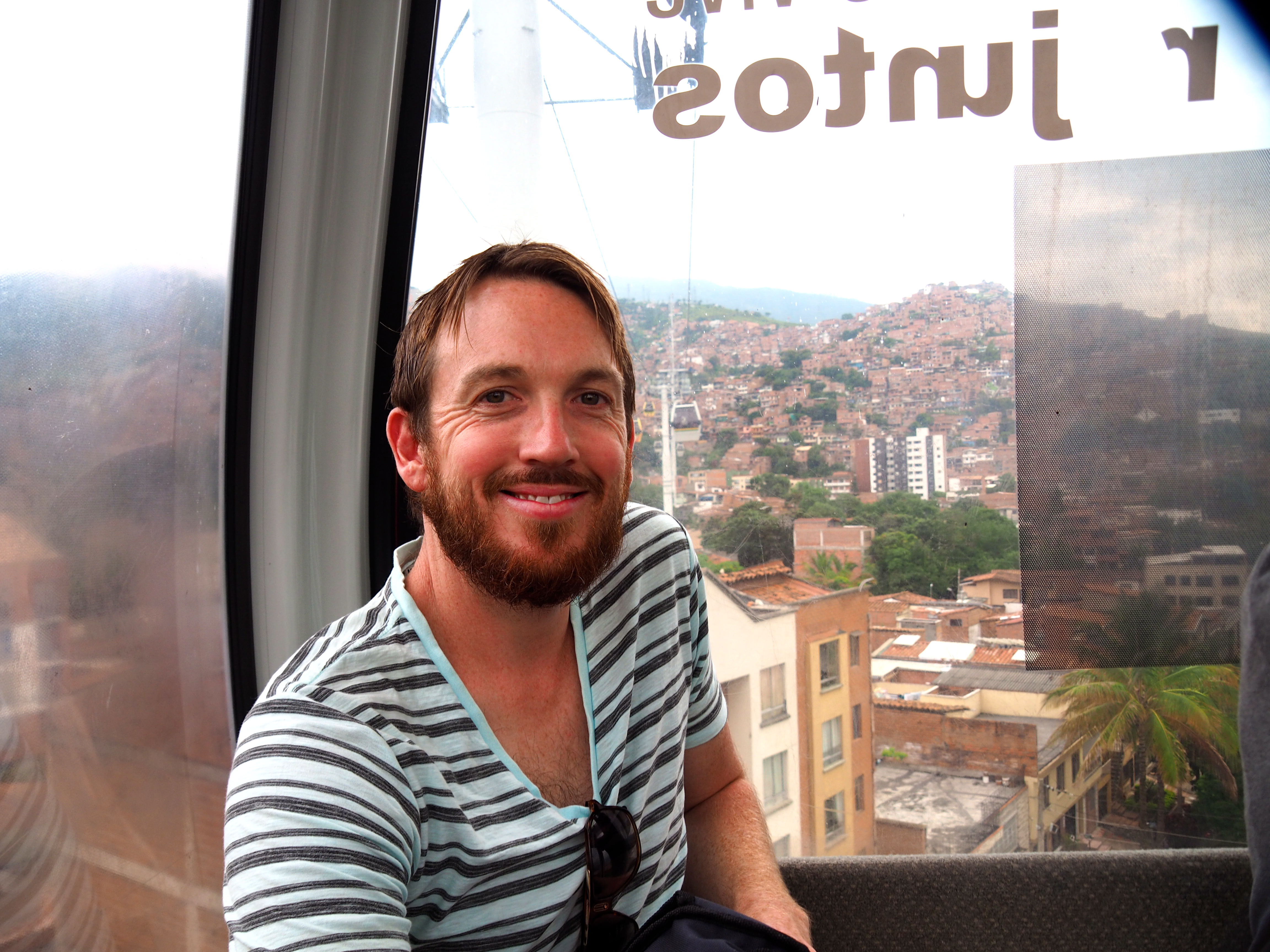
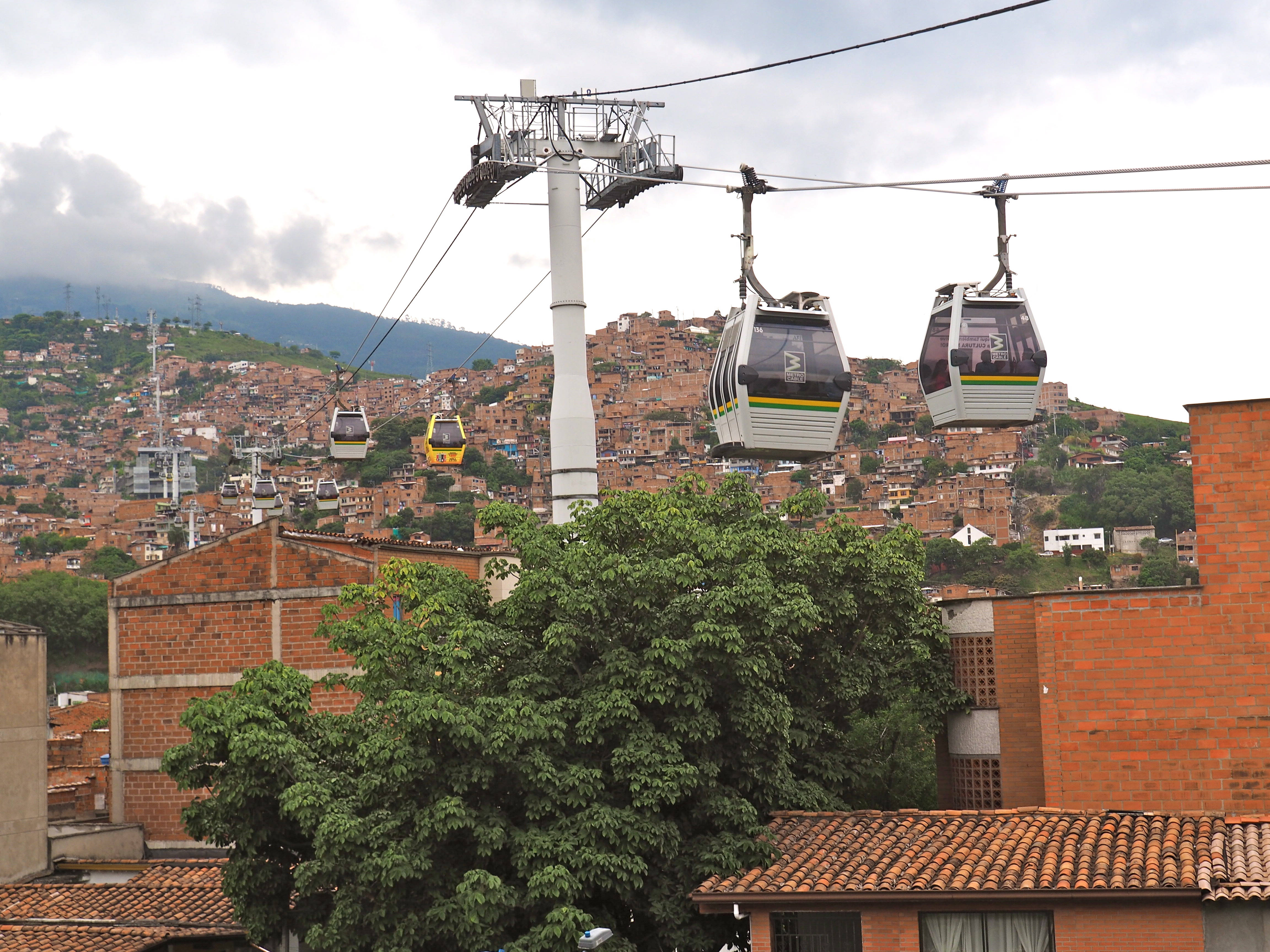
Medellin is a city built into a valley, and whilst the city centre is now transforming into a modern city, the outskirts and outlying regions are still very very poor. The poorest areas are basically built into the sides of steep mountains surrounding the city centre. Roads are not built as it is so steep, instead the people use a series of crazy steep and lengthy staircases to move around these parts of the city.
Some of the steep staircases that used to be the only
way to traverse the poorer parts of Medellin
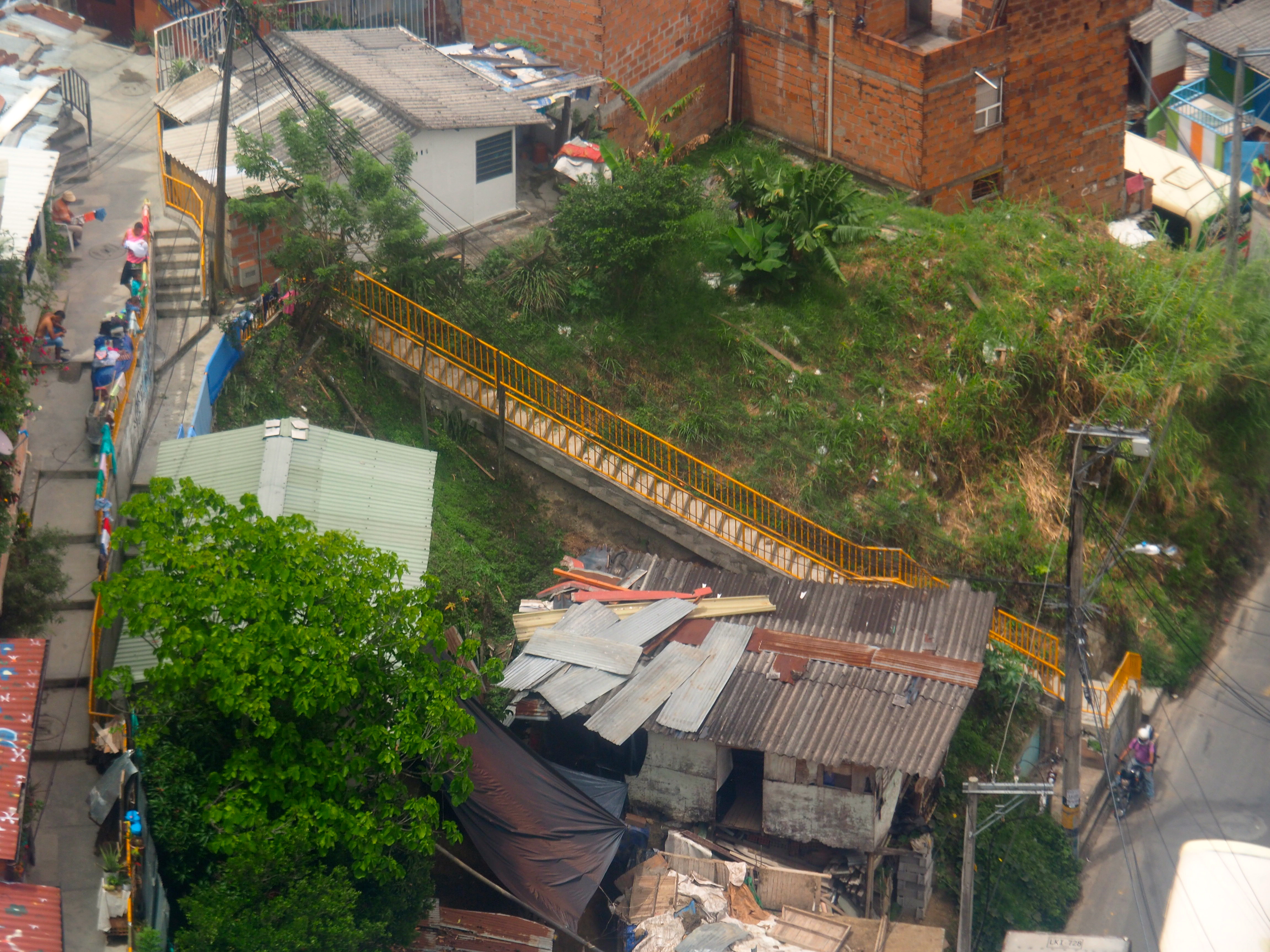
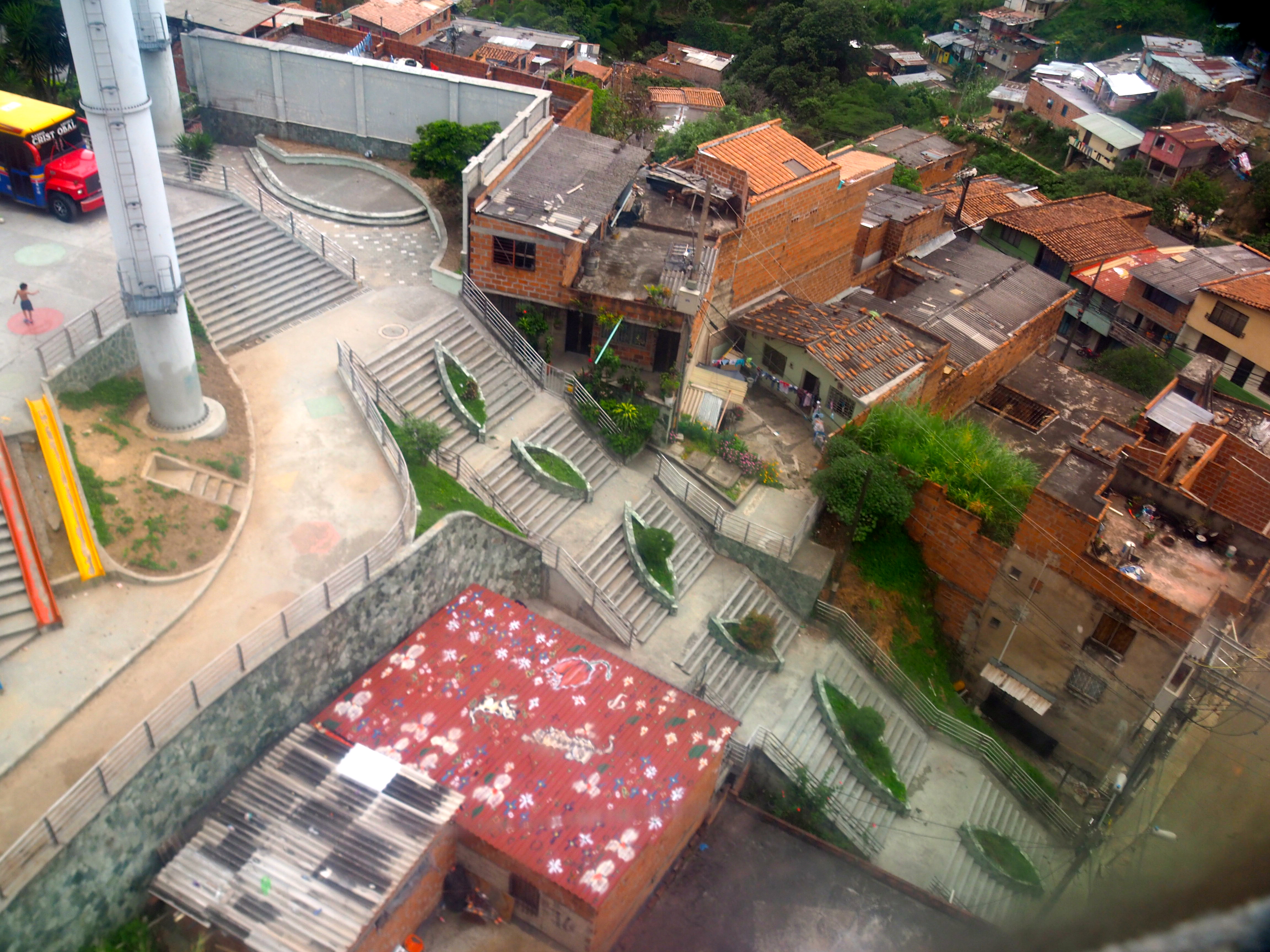
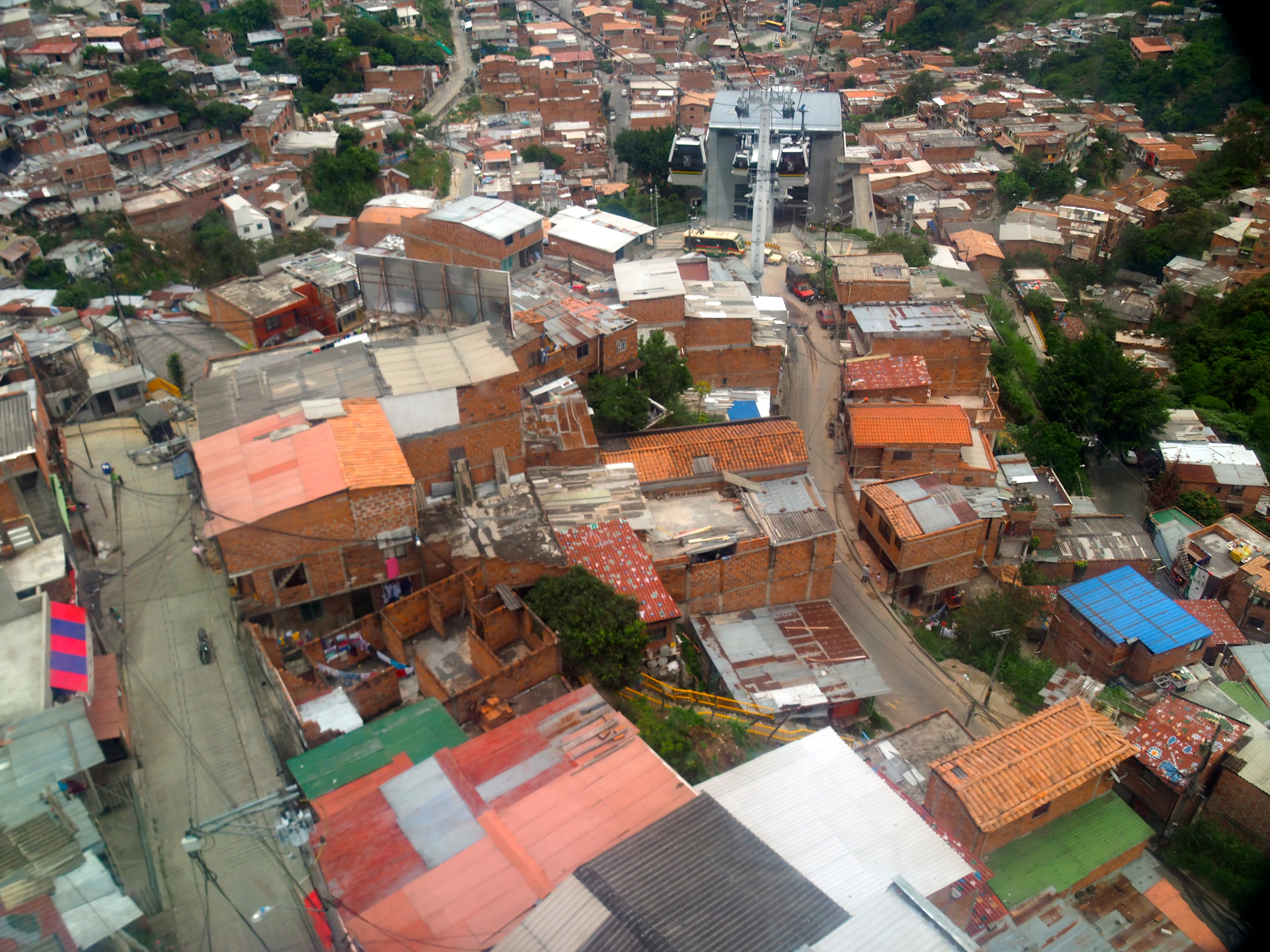
This made it practically impossible for anyone living in these areas to get a job or even have the opportunity to study in Medellin as they would spend hours walking up and down their steep staircases to reach the first public transport hub.
Some of the poorer areas of Medellin as seen from the cable car – a marked change from the street we were staying on
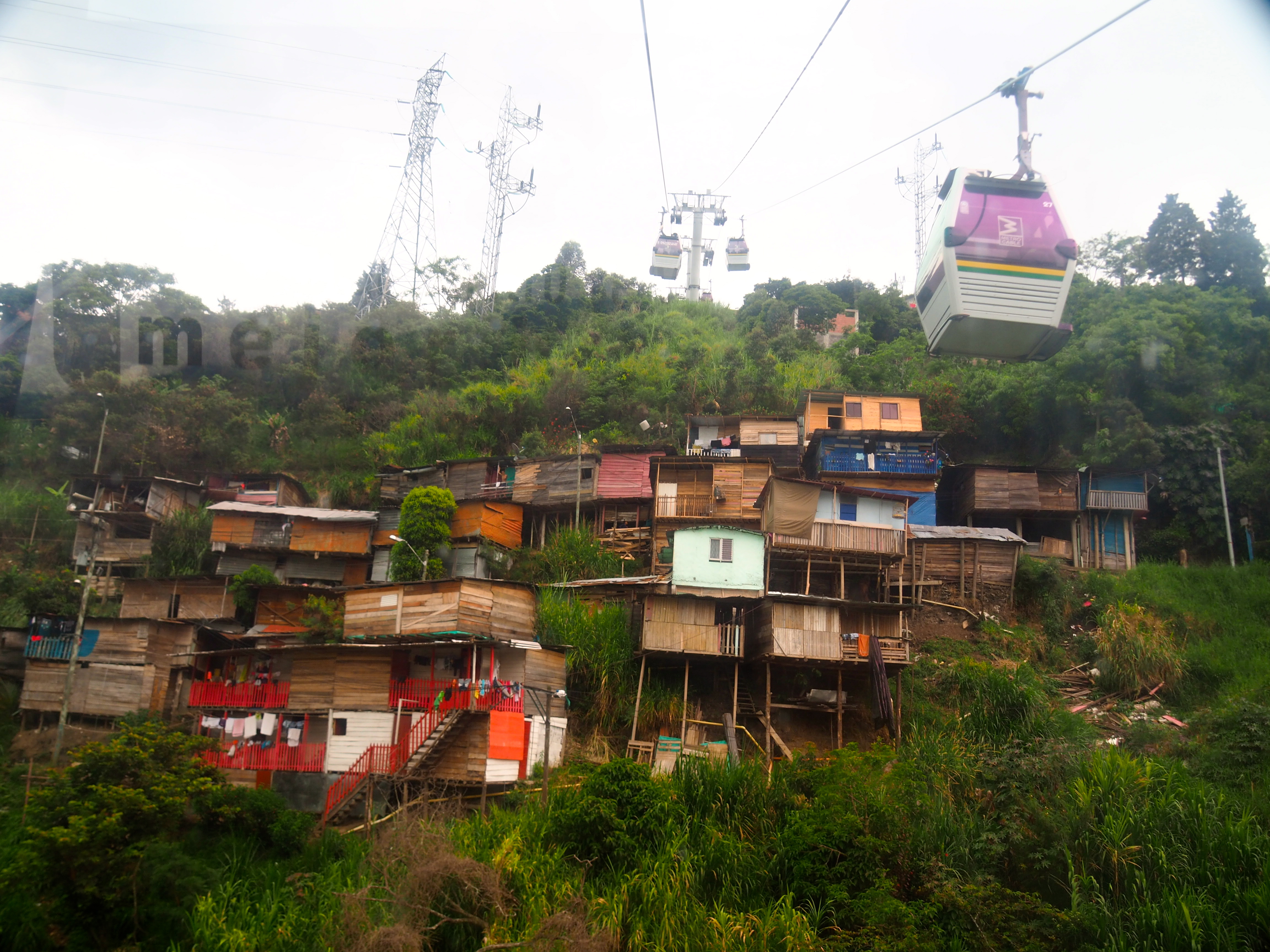
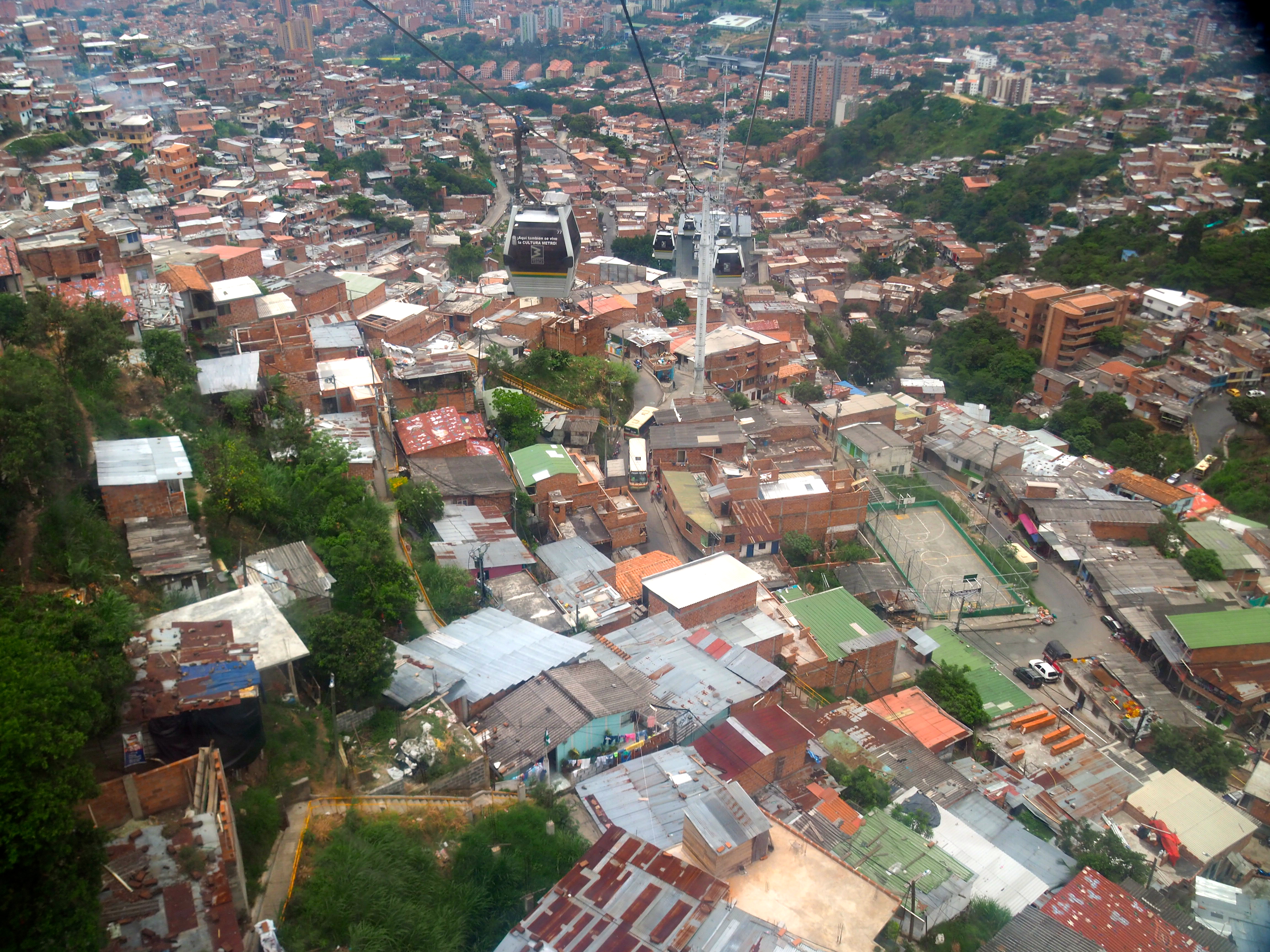
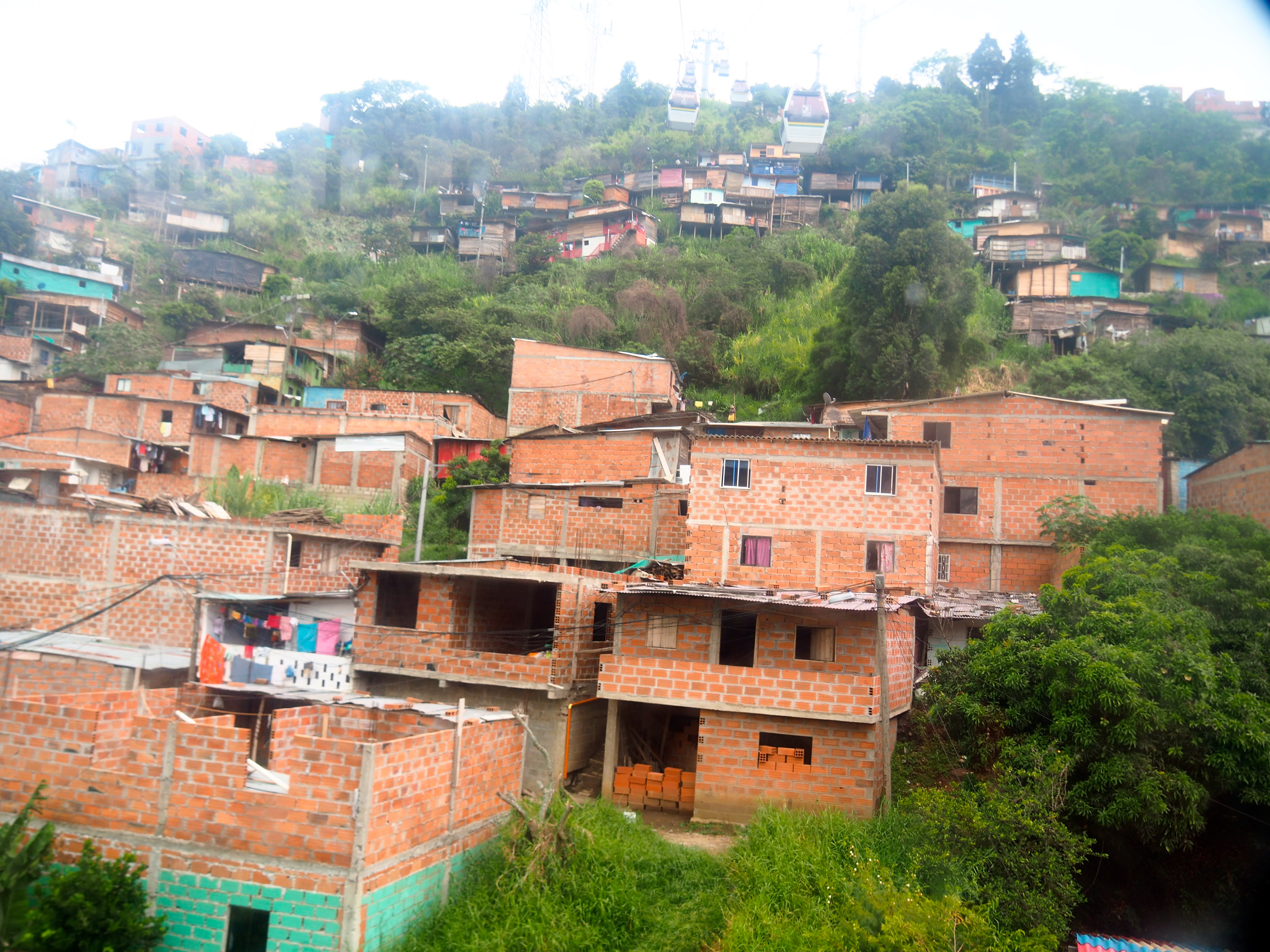
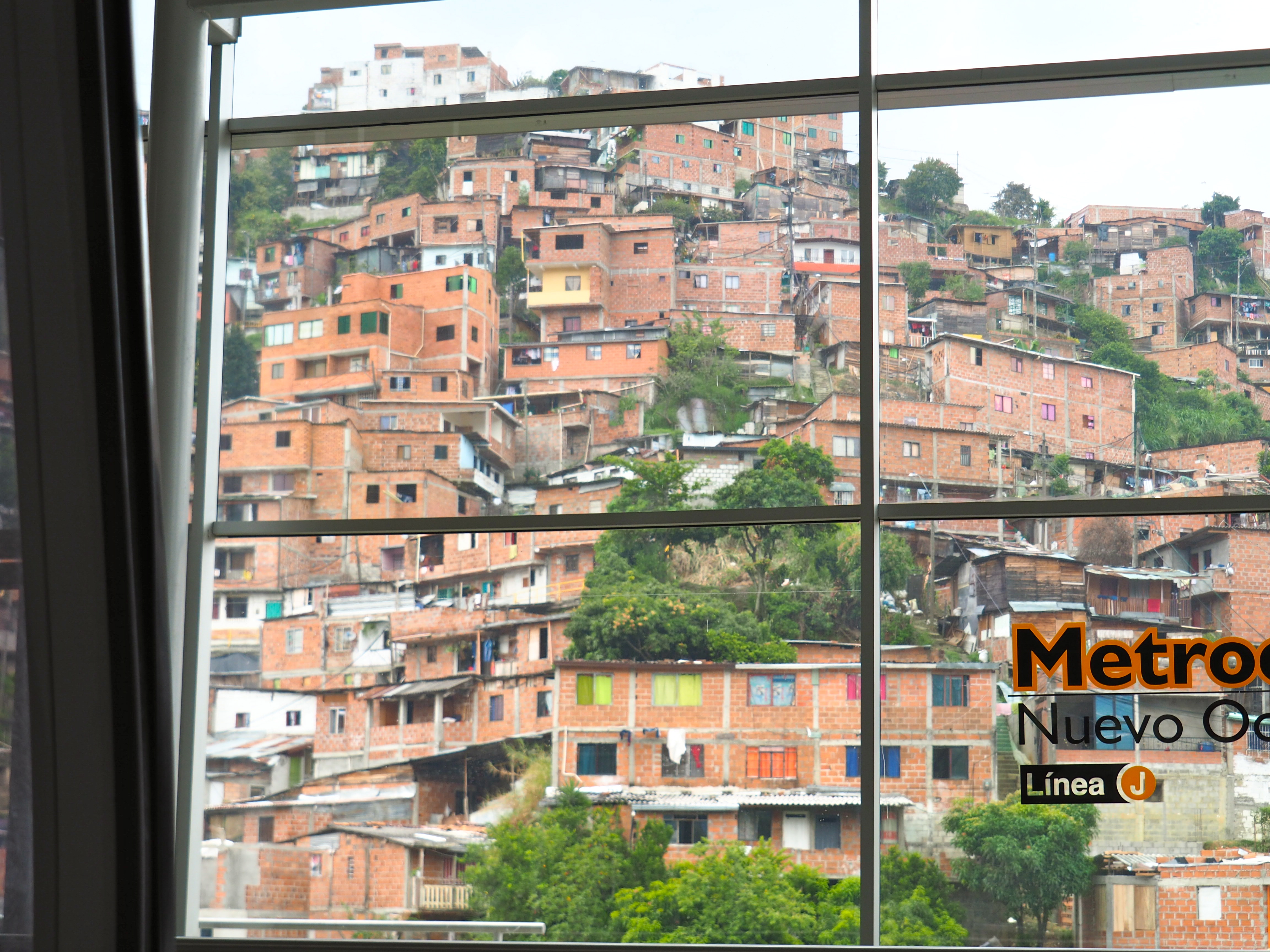
With the installation of the new cable car routes, suddenly the disadvantaged and poorest people of Medellin had a cheap and accessible way to connect to the city – to connect with education, jobs and opportunity. It has changed the lives of the many people living in these areas, and as it continues to be extended, will certainly continue to change more for the better.
As a tourist, it also provides a fantastic birds eye view over some areas of Medellin that perhaps you might not see otherwise. For the same cost as the bus or metro, we rode the cable car along one of the routes and saw frst hand the poverty that exists in Meddelin still, however we also rode along with many of the people living in these areas who are working hard to better their futures.
Fabulous views of Medellin
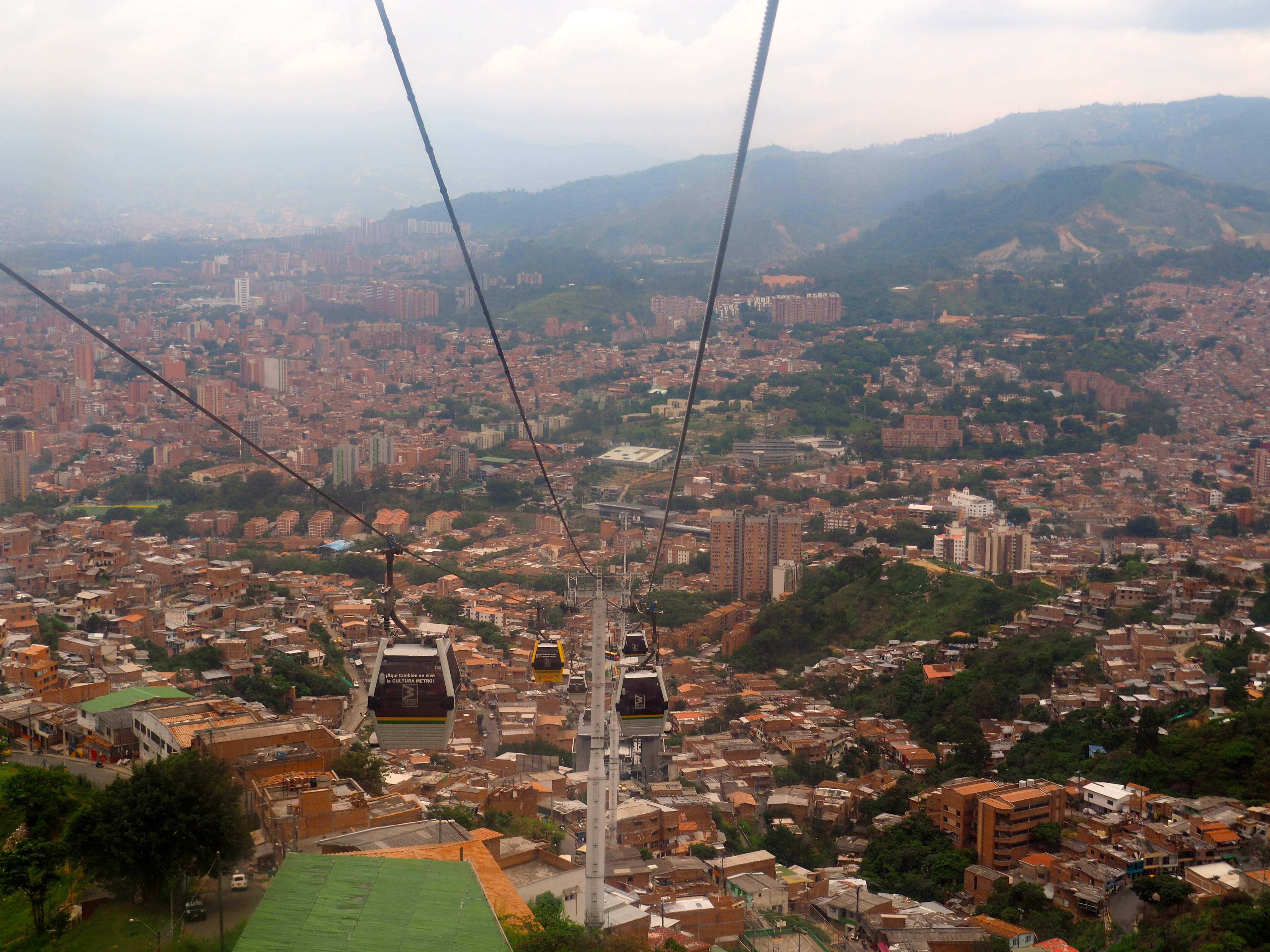
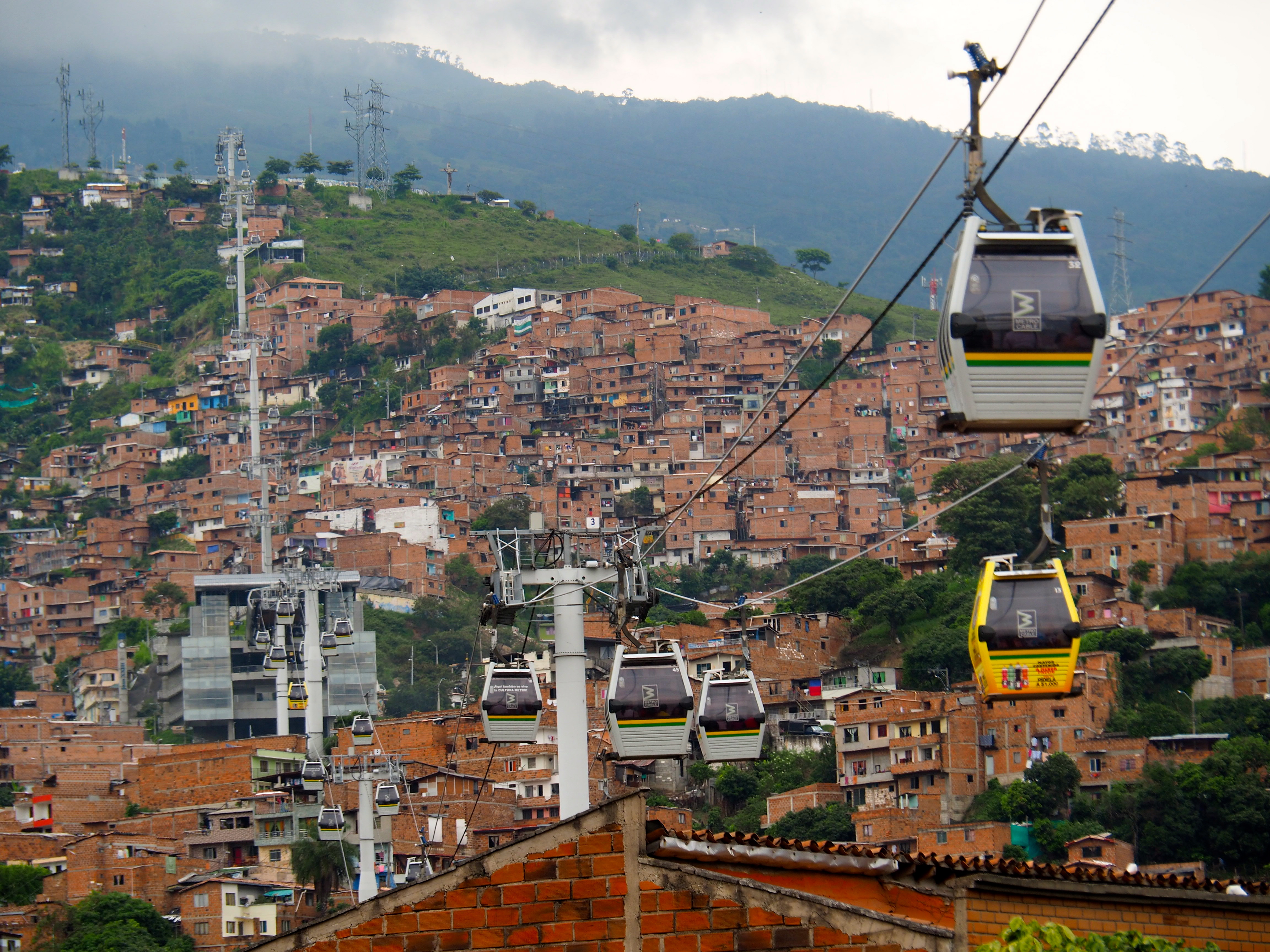
The cable car was modern and gave us a stunning view over the city and the suburbs – riding up the steep mountainside took my breath away, and going down was even more awe inspiring. For an integral part of Medellin’s move forward from its past, the cable car is a great fit showing off the city’s innovation and passion for improving the lives of ALL of its citizens.
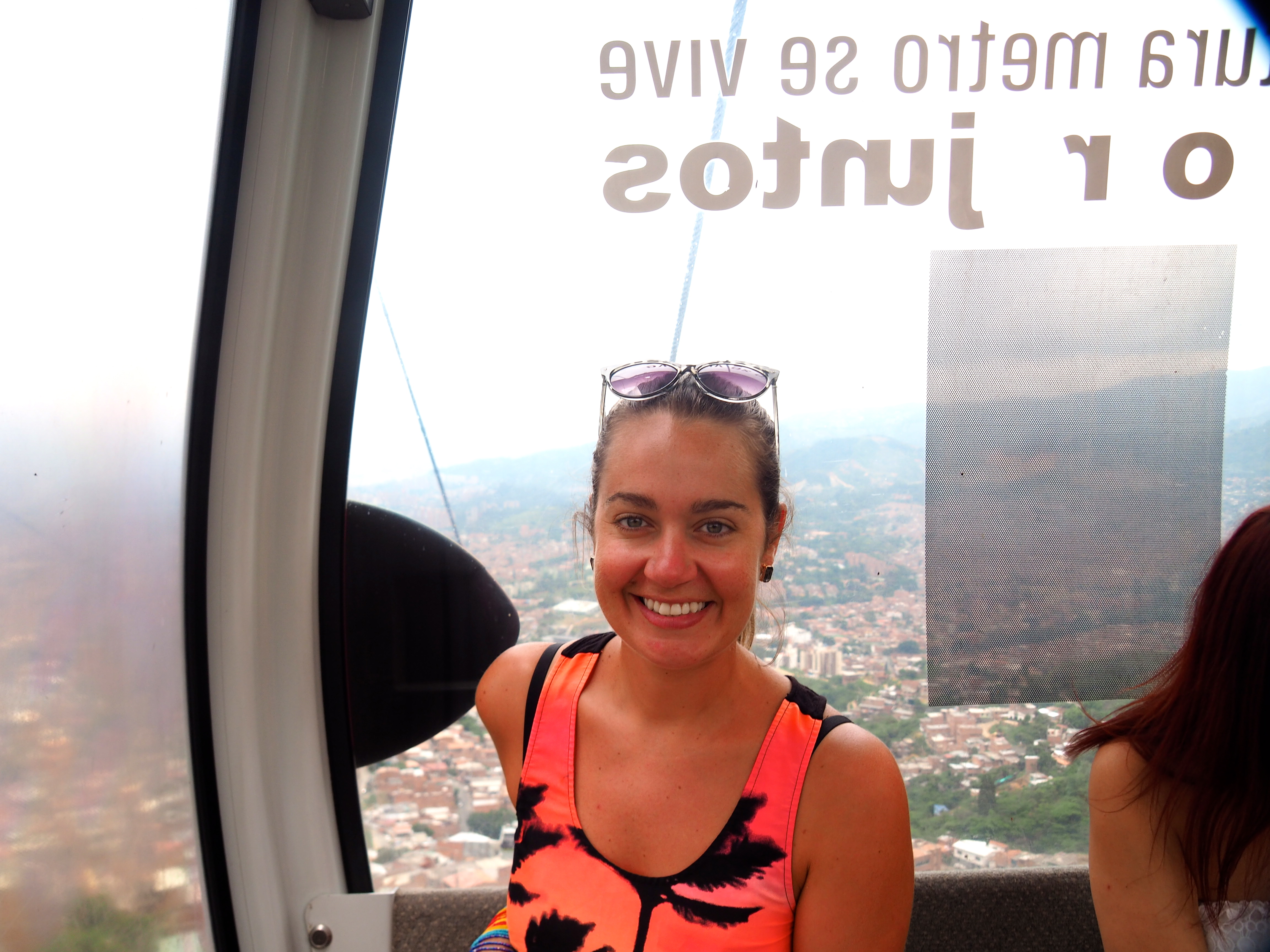
Overall, we thoroughly enjoyed Medellin and I would love to go back and spend a bit more time exploring the museums and art galleries, not to mention the many restaurants the city has!
Medellin – a city that is SO MUCH MORE than simply the hometown of Pablo Escobar.
